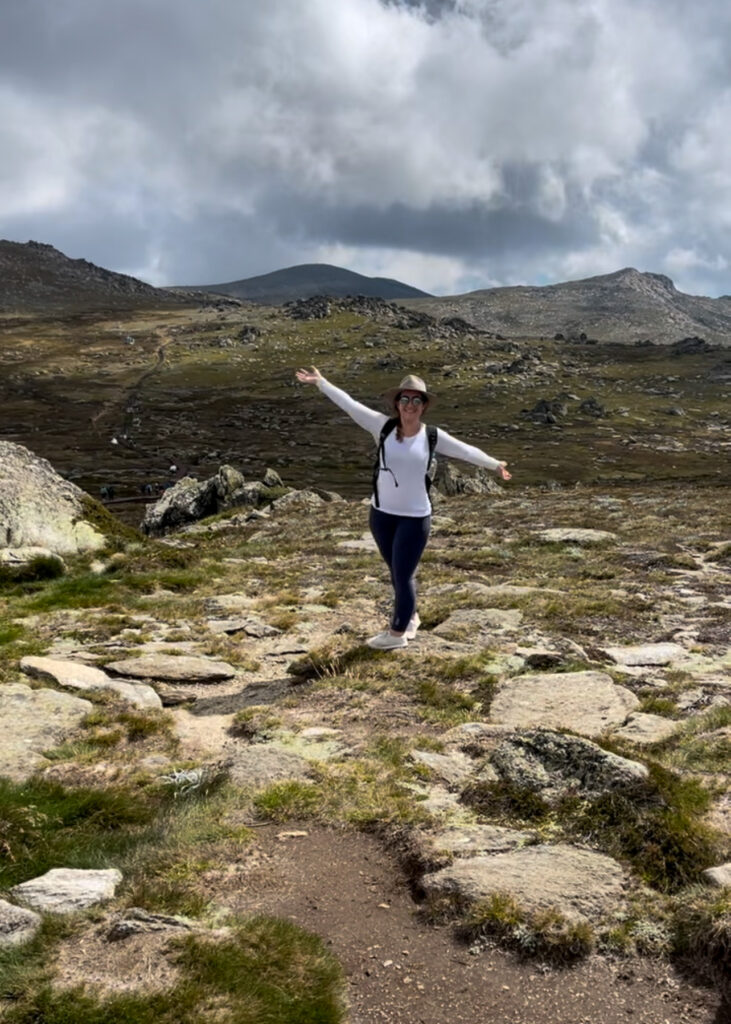
Length: 12km return
Time: 2-3 hours one way, 6-8 hours return which includes taking a break at the top.
Grade: 2, Relatively easy. Mostly flat with some steeper sections.
Summit walk for Mt Kosciuszko is open 8.30am - 5pm during Summer.
Mt Kosciuszko chairlift is open 9am - 4.30pm during Summer.
Mt Kosciuszko weather: You must check the weather forecast before you go, no matter what time of year, as it can be unpredictable.
Mt Kosciuszko pronunciation: Mount Coz-ee-osk-co
The below items are a great starting point for your packing list. I am assuming you are going to do the Mt Kosciuszko walk during the Summer months, but these items will also apply to the colder months as well.
In Summer, even though it is in the mountains, temperatures can be warm - around early to mid-twenty degrees celsius - but the peak of Mt Kosciuszko can still be chilly and very windy, even on a sunny day - expect temperatures more like 10-20 degrees celsius at the summit. Be sure to pack a light jacket and/or scarf in your backpack.
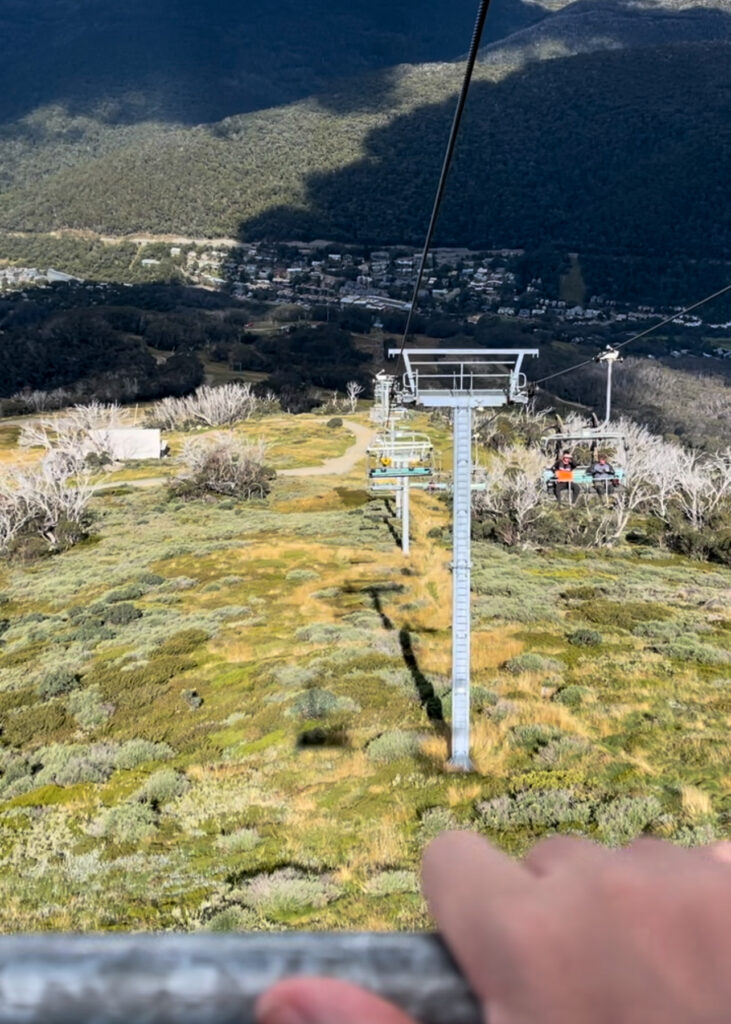
Here are some other items you should pack for your hike:
When I climbed Mt Kosciuszko, I did the trek in March. While this is still technically only just past Summer, it was still a bit colder than I expected. Luckily I did pack a light puffer jacket and a rain jacket, and I needed both in the end!
Also, I cannot stress enough how important sun protection is. There is no shade or cover the entire way from the chair lift to the top of Mt Kosciuszko. Apply sunscreen, wear a hat and sunglasses, and bring lots of water.
I, unfortunately, made the mistake of not applying enough sunscreen, and the one area that was exposed got severely sunburnt. Luckily I had a hat, sunglasses, and a long-sleeved shirt otherwise it would have been a lot worse. Not great to be peeling the week after your amazing trip.
These items will come in handy not just at the top of the mountain, but at the base as well. I would even argue that you should pack these for the summer months, not just in winter.
Temperatures in the colder half of the year can reach below zero, with heavy snow that can cover the walking track up to Mt Kosciuszko. Check the weather beforehand, and make sure if there is snow predicted that you are well-equipped and experienced to handle that.
There are 2 camping grounds close to Mt Kosciuszko that offer cheap and beautiful places to stay for your hike up the mountain.
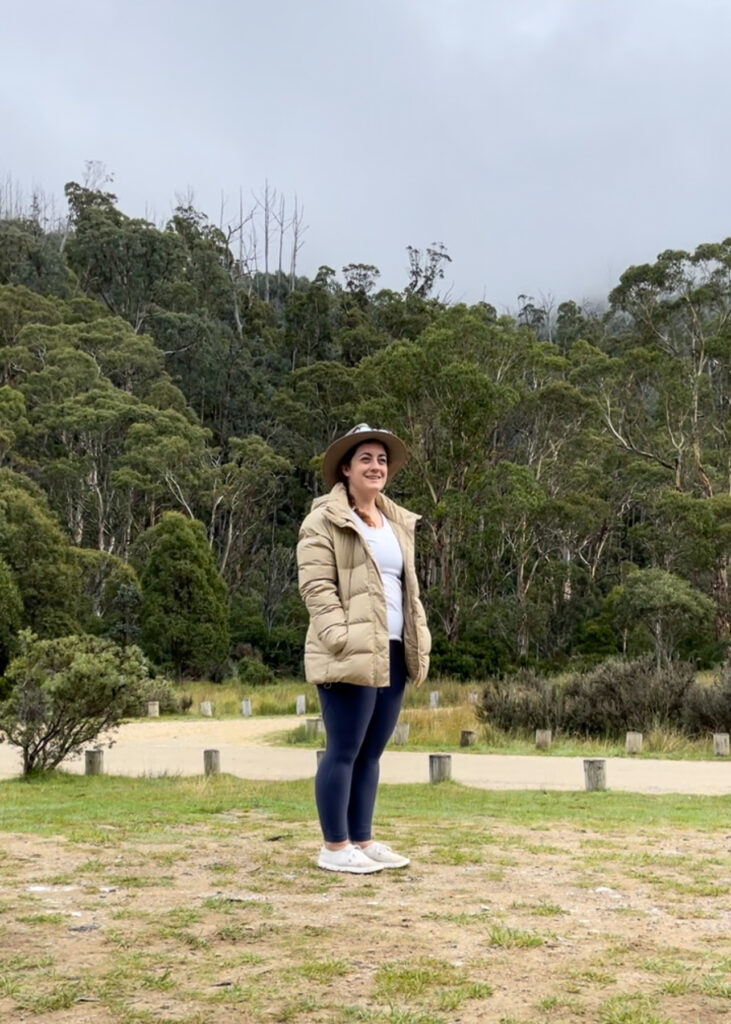
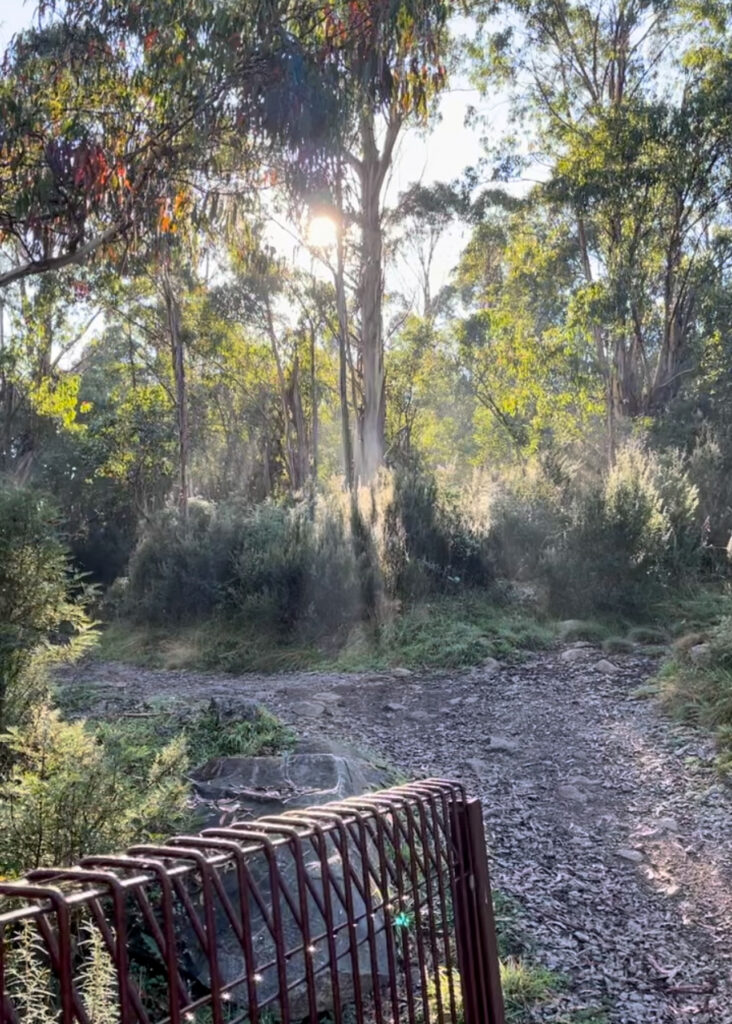
I stayed in Ngarigo Campground, located around a 10 minute drive from the base of Mt Kosciuszko. Within this campsite are located around a dozen good-sized camping sites with fire pits, drop toilets, Thredbo River right next door, and a walking and cycling track that takes you through some gorgeous bushland and along the river.
On one campsite, we managed to fit 2 tents and a camper trailer with room to spare for a communal dining set up around the fire pit. There is also designated car parking next to each site.
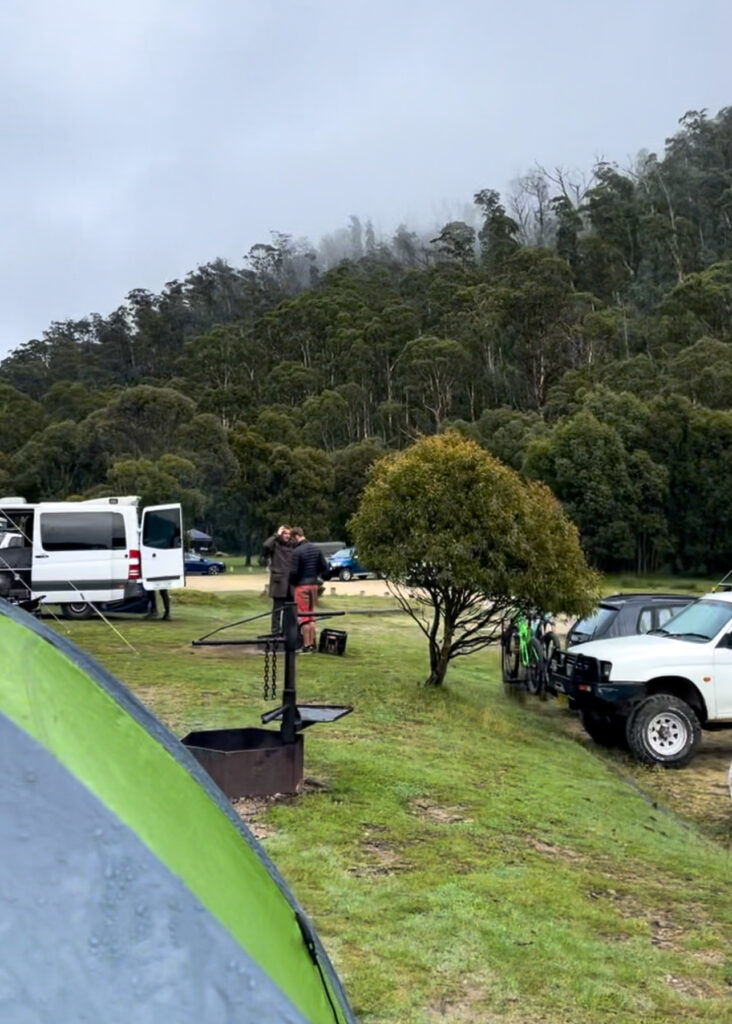
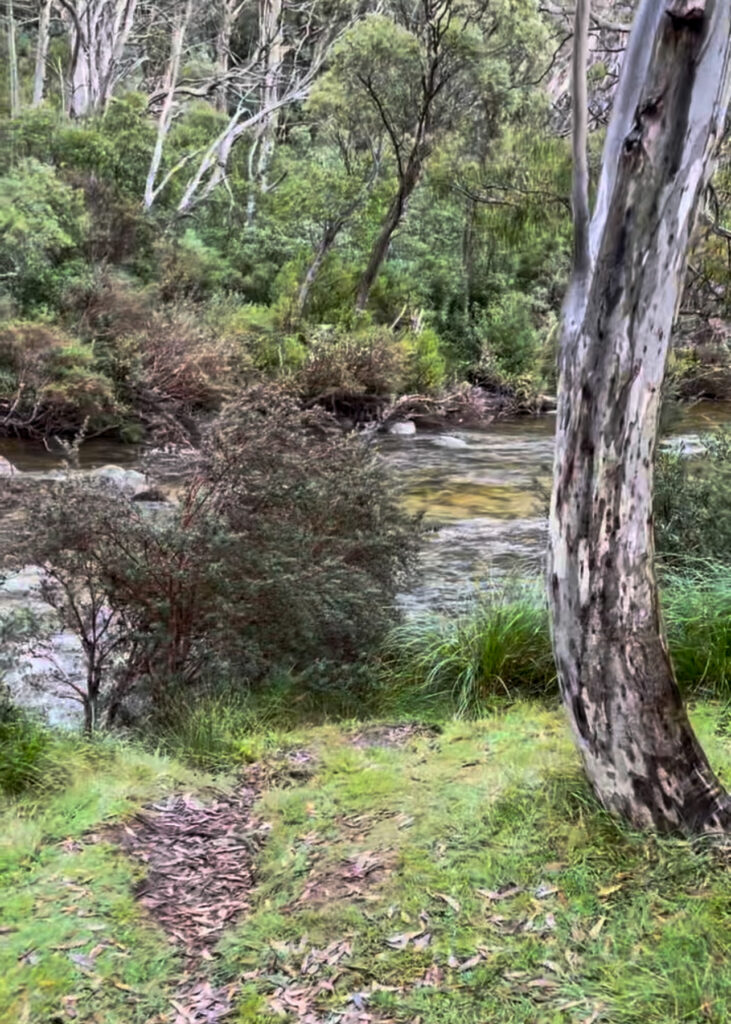
The second option is Thredbo Diggings Campground, located 15 minute drive from the base of Mt Kosciuszko, just inside the Kosciuszko National Park gates if traveling from the east.
Both of these campgrounds are technically free, but you will need to book ahead online and there is a $6 fee per booking. You can book both of these through the NSW National Parks official website.
The town at the base of Mt Kosciuszko is called Thredbo, and is most well known for being a ski town during the winter snow season. There are chalets, hostels and airbnbs you can book. But to get one for a reasonable price, you will need to book far in advance.
All of these accommodation options are within very easy walking distance of the Mt Kosciuszko chairlift.
If the options within Thredbo are a bit out of your budget, try Jindabyne. Located a 30 minute drive from the base of Mt Kosciuszko, Jindabyne is a bigger town right on the edge of a beautiful lake by the same name. You will also find more restaurant options and the Snowy Region Visitor Centre. And if you don't want to buy or bring your own gear with you, Jindabyne has great options for gear hire.
This Airbnb was one option we have used and loved.
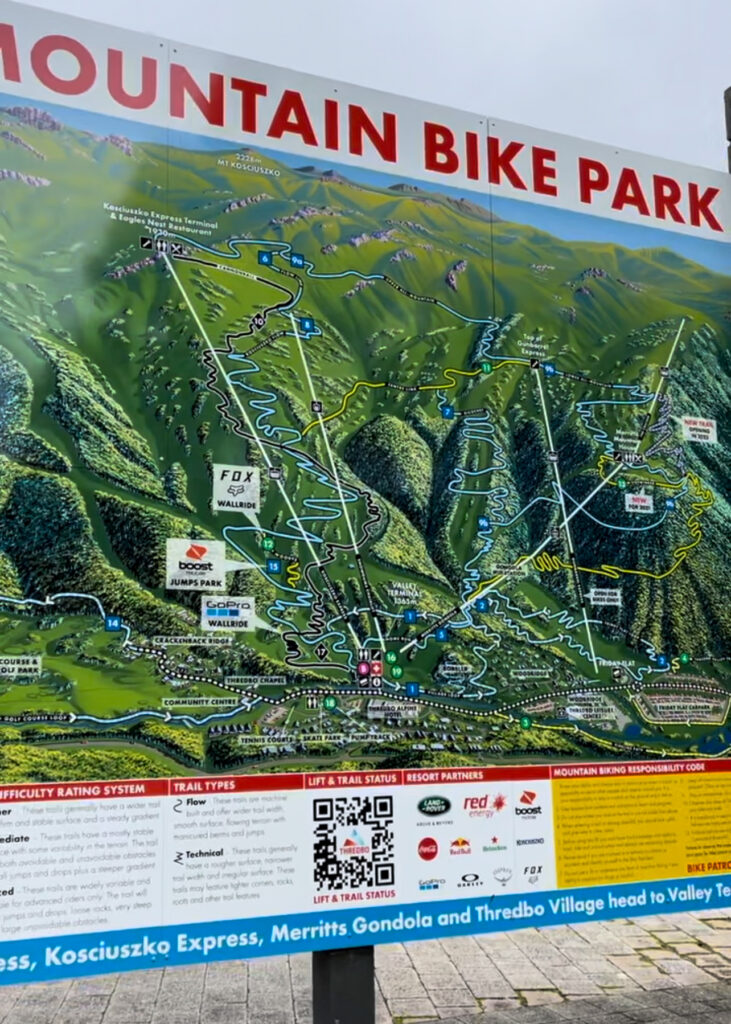
If you're gearing up for your first hike up Mt Kosciuszko in the summer, you're in for a treat. Having made the journey myself, here's a short guide to what to expect to ensure you're well-prepared for this adventure.
Begin your day by catching the chairlift. The price is reasonable, and it opens at 9 am. I recommend going at the opening or as close to it as possible to make the most of the cooler weather and don't forget to grab a map at the bottom before jumping on. The chairlift will save you some energy, taking you halfway up the mountain and offering stunning views along the way.
You can walk the entire way up, but for first-timers, I think the chairlift is still an amazing way to accomplish this walk and you do get some pretty views while you're heading up and down.
Before you set out on the main trek, there is a shoe-cleaning station. Please, don't forget to use this! This helps to protect the National Park and this precious piece of Australia free from weeds and diseases.
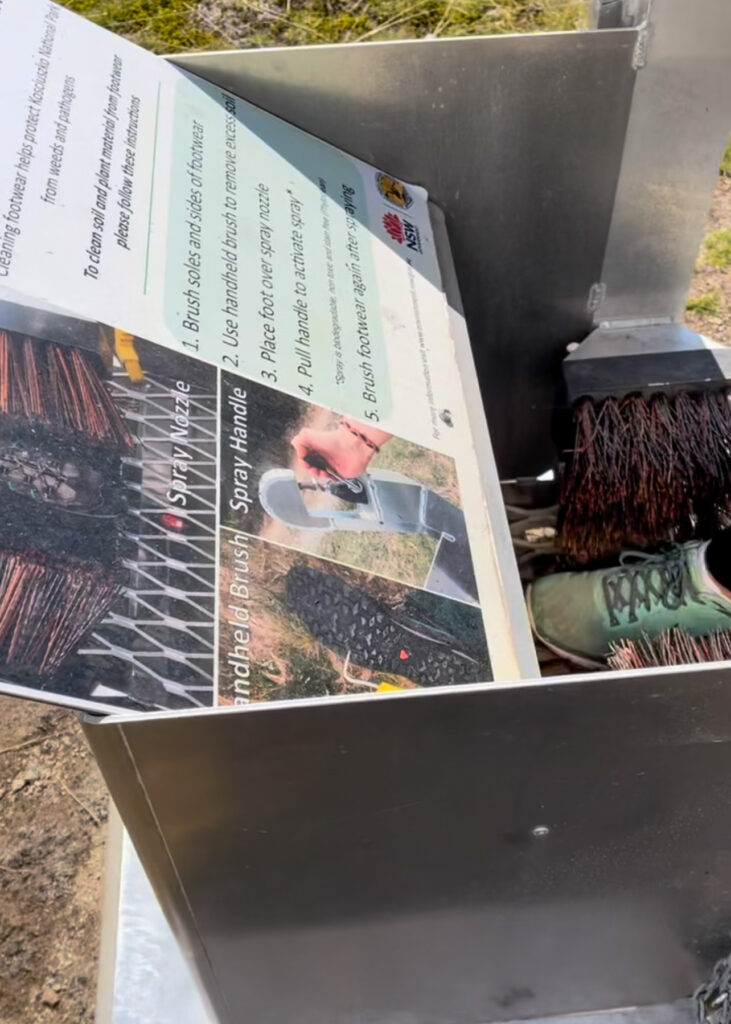
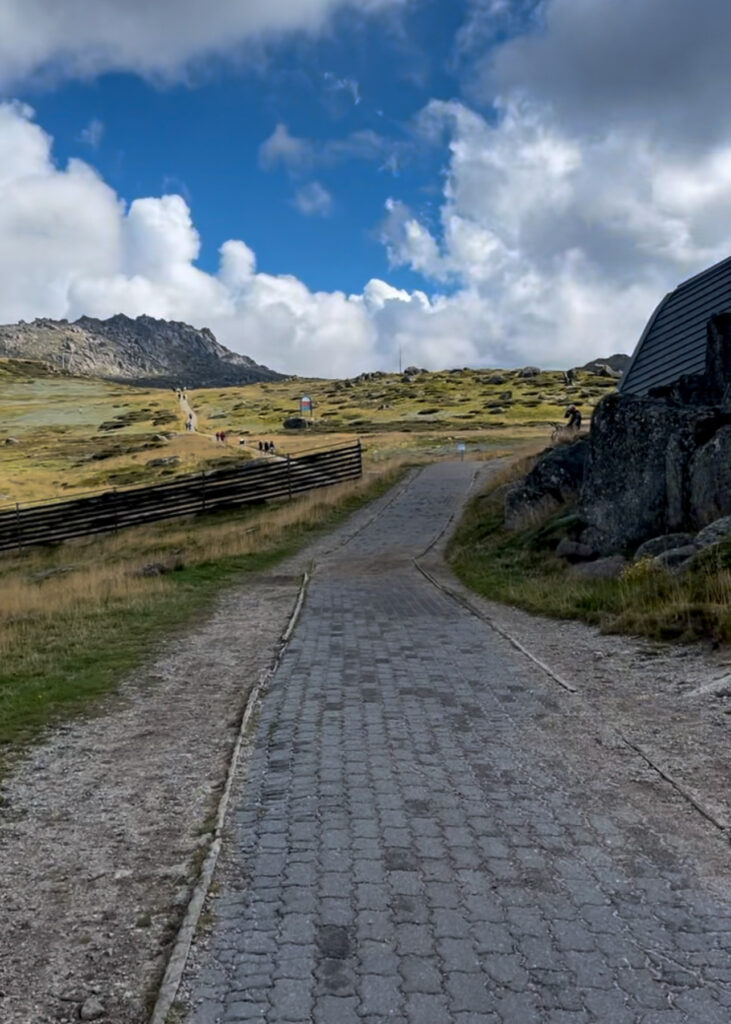
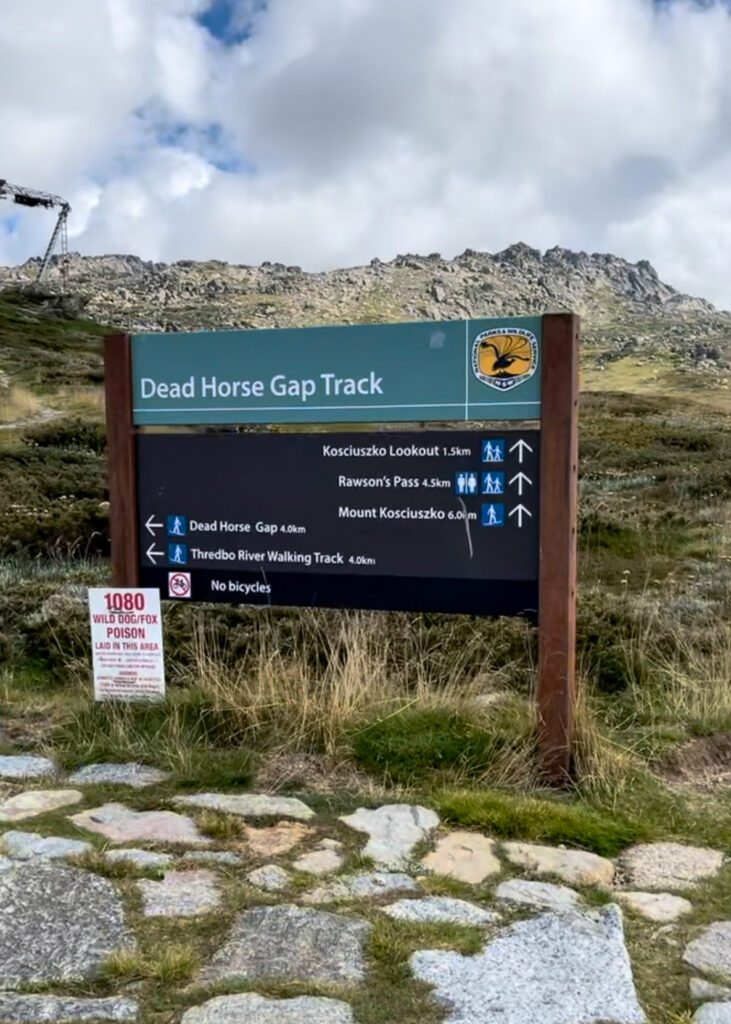
After you've done that, brace yourself for a bit of a climb at the beginning. You'll pass some beautiful streams along this first section so take your time and appreciate the beauty. Once past the steeper sections, the path transforms from boardwalk to gravel, making for a comfortable stroll. Towards the end of the hike, the path does become steeper again before you reach the Mt Kosciusko summit.
Around the midway point of your walk, keep an eye out for the beautiful glacial lakes – Lake Cootapatamba and Blue Lake. These picturesque spots provide excellent opportunities for photos. You'll also be able to glimpse the state of Victoria in the distance, adding to the breathtaking scenery.
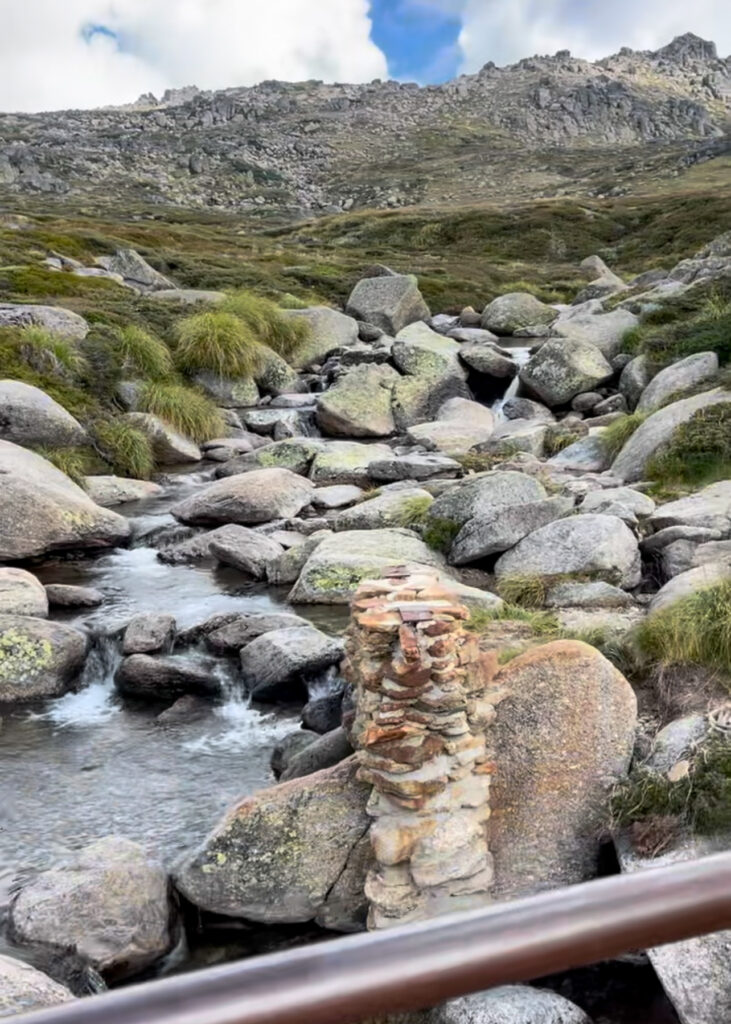
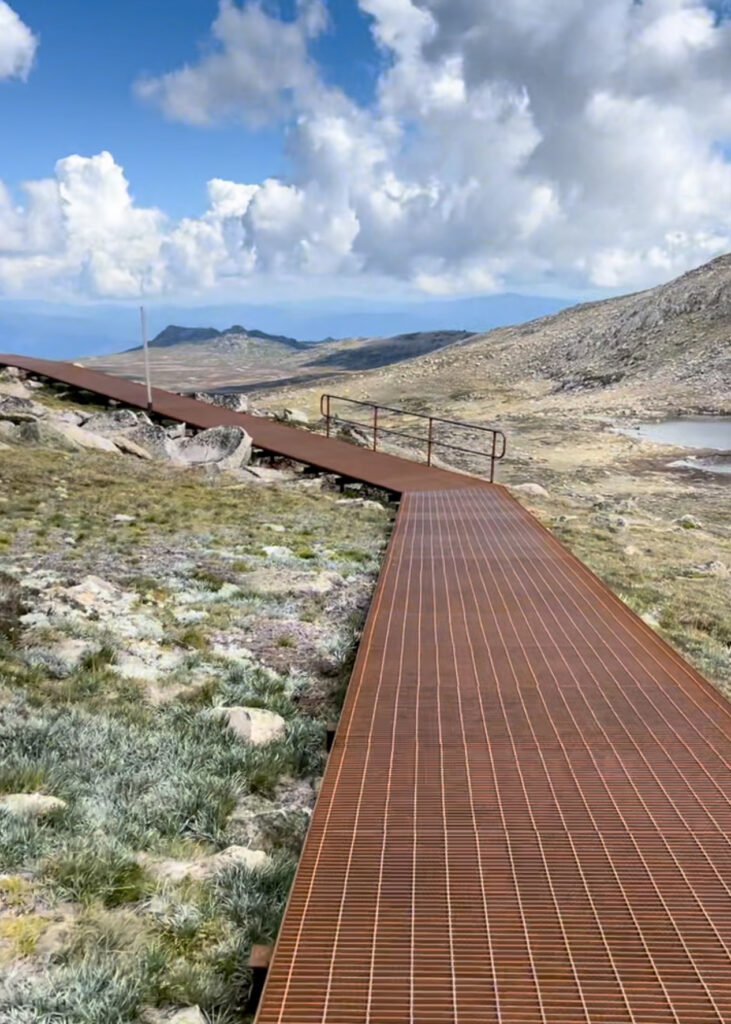
Approximately 500 meters before reaching the summit, you'll find toilets that are free to the public. It's a good idea to make use of them before the final stretch. Nature calls, even in the mountains!
The remaining climb is around 1km of gravel path that is steeper than previous sections. Reaching the summit is a significant accomplishment. There, you'll find a summit cairn and a plaque, offering a perfect backdrop for photos. When you are standing on the cairn, you are the highest person in all of Australia!
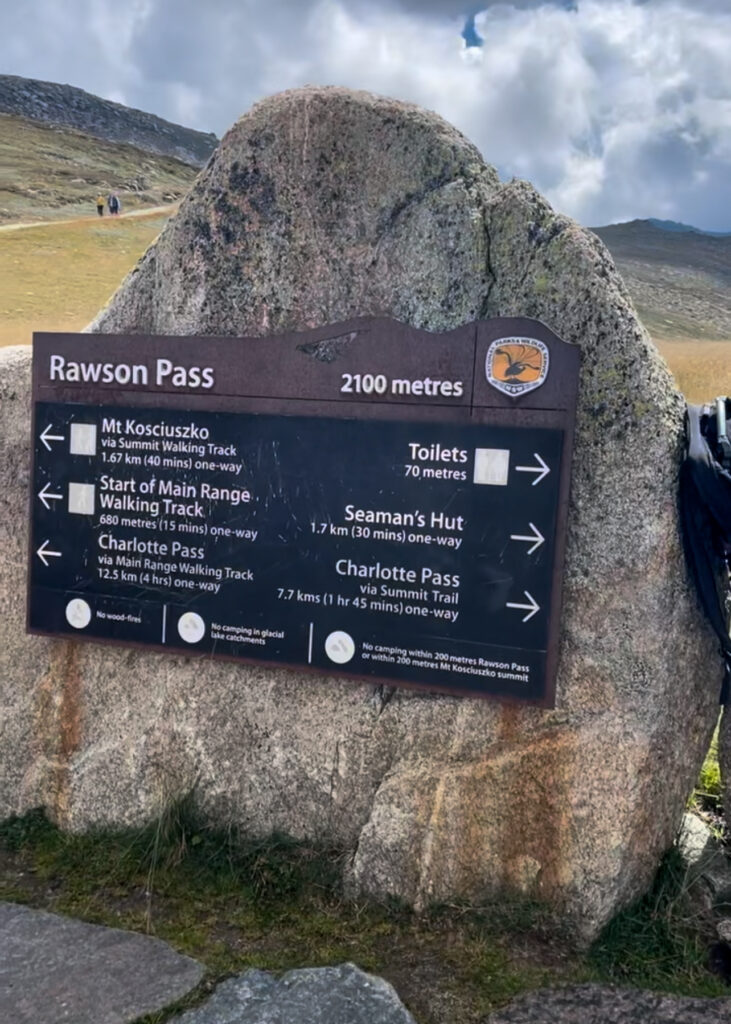
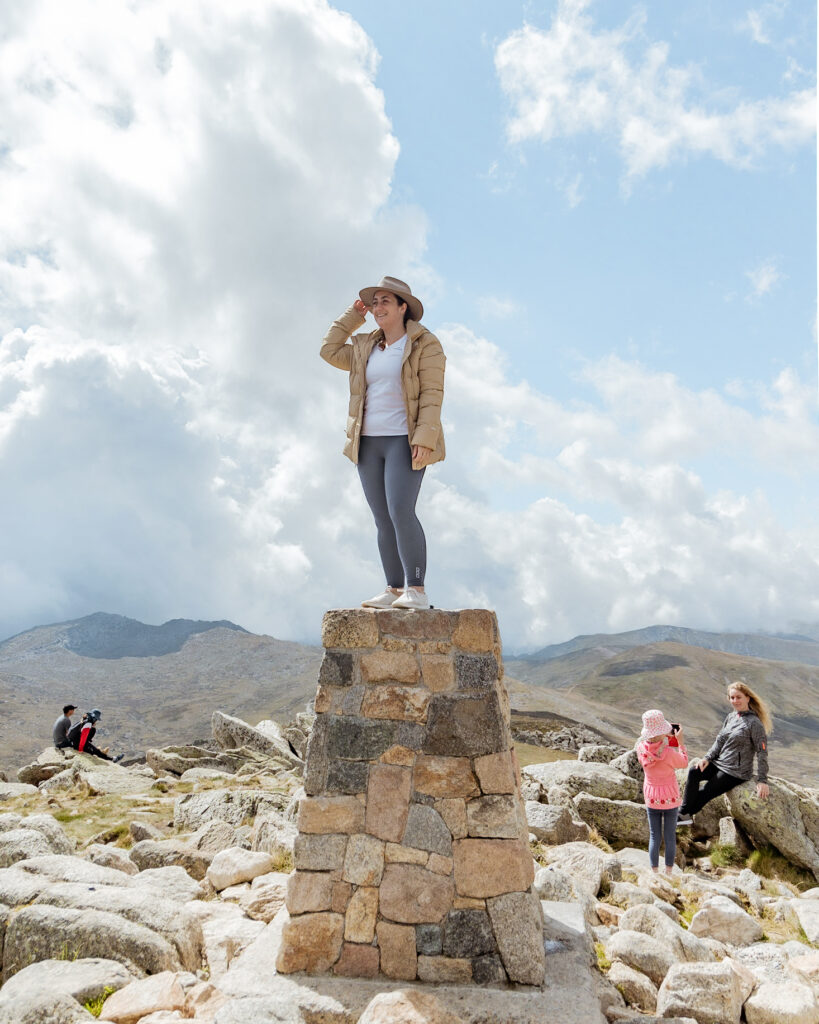
Take the opportunity to have a break at this stage. There are plenty of spots to sit, relax, and enjoy any snacks or lunch you brought along (which I highly recommend because you will have been walking for around 2-3 hours at this point and you need to refuel!). Make sure you also hydrate yourself - even with the cooler weather you are probably sweating more than you realise.
On the way back down, the return journey is quicker, allowing you to savor the scenery one last time. Take advantage of the chairlift once again, and this operates until 4:30 pm. The return trip will take about 2 hours at a good pace, so make sure to start your descent in time.
In summary, a summer hike up Mt Kosciuszko is a memorable adventure. Make sure to check out the beautiful lakes and mountains around you, and consider bringing some snacks and lunch. With preparation, essential supplies, and a sense of adventure, you'll find yourself standing at the highest point in Australia. So, lace up your boots, grab that map, and get ready for an unforgettable day in the Aussie Alps!
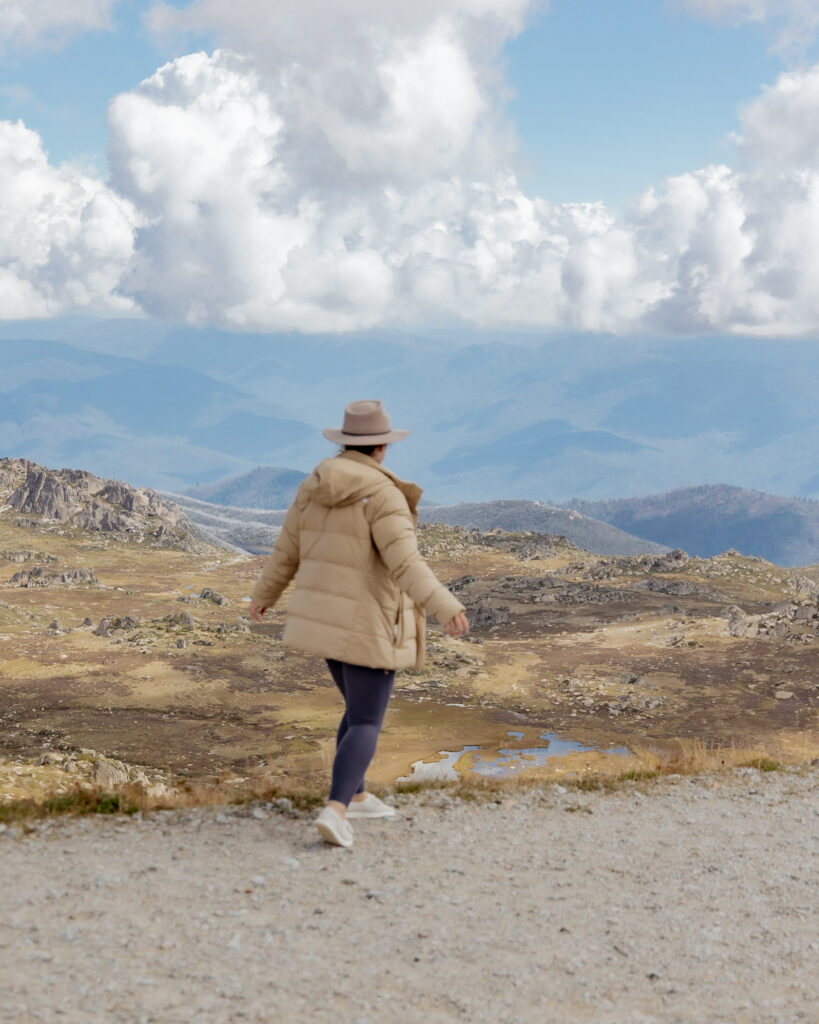
Sharing your Mt Kosciuszko adventure on social media is a fantastic way to capture and relive those breathtaking moments. When posting, use location tags to highlight key points of your hike. This helps others discover these locations and adds context to your content.
Some hashtags you can use to share your content on Instagram or Tiktok:
Some accounts that you can tag to reach a wider audience include:
Remember, the key is to share your experience authentically and inspire others to explore the beauty of Mt Kosciuszko. Happy posting!
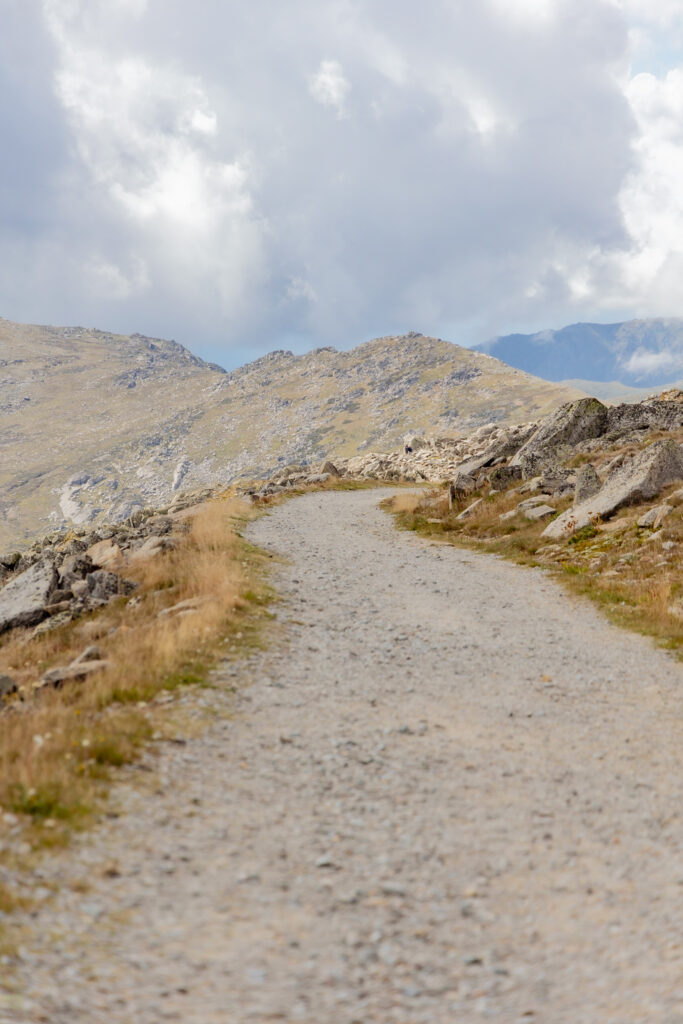
Looking for other Australian hiking adventures? Check out this hidden waterfall in Woy Woy, near Sydney.
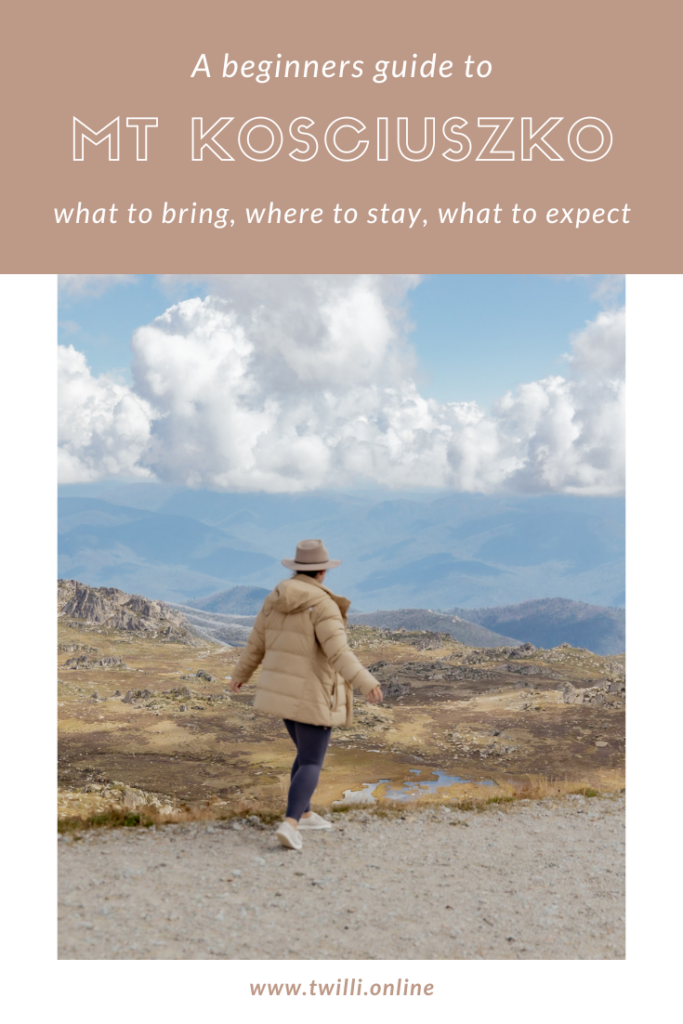
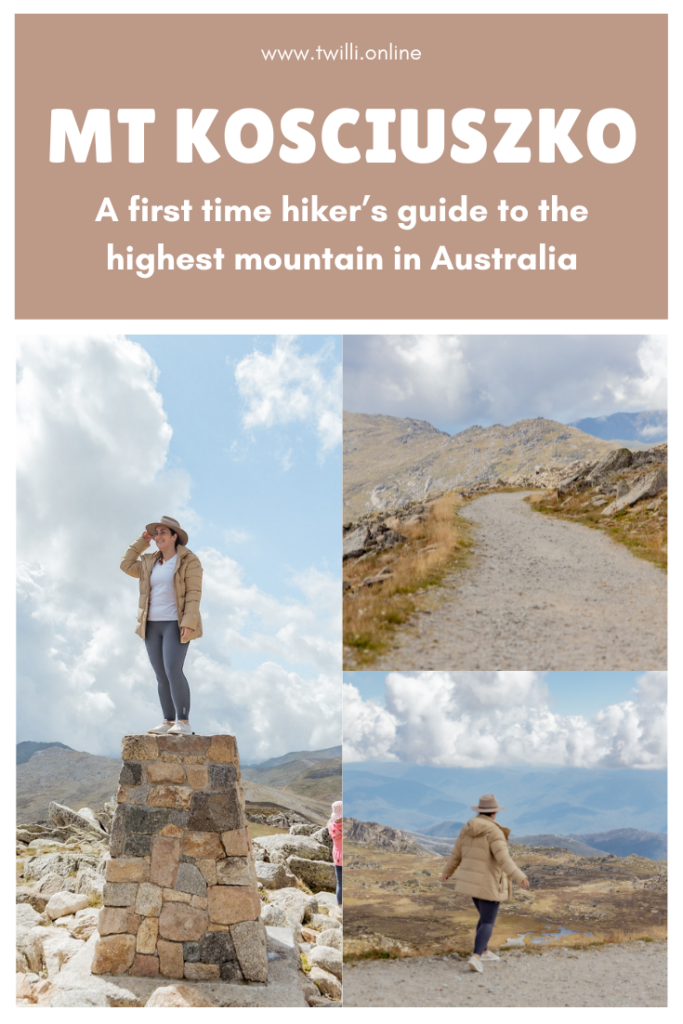
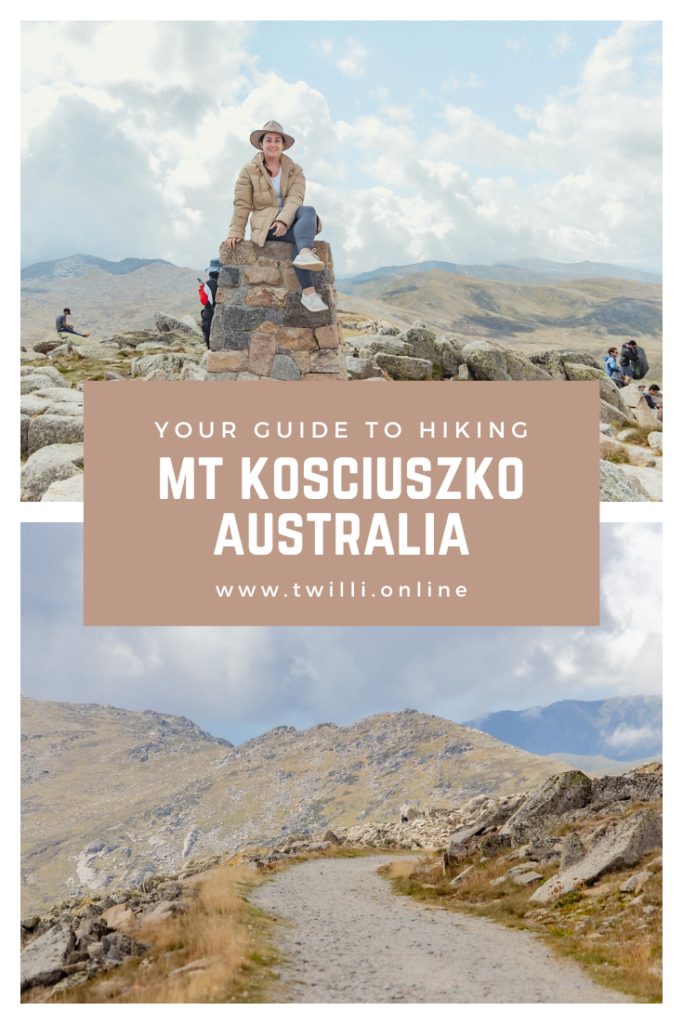
This incredible waterfall pool is only an hour or so drive from Sydney, located in Brisbane Waters National Park, in Woy Woy on the Central Coast of New South Wales.
All up this hike to the Woy Woy waterfall pool is around 20-30 minutes, and just over 2.5km one way. Allow around 1 hour total for walking, and plan to stay any amount of time between 10 mins to a few hours when you get there.


The only entrance to the walk to get to this particular waterfall is off Woy Woy Road. Search for Woy Woy Walk on Google maps, or find the 'Tunnel Firetrail' and follow it until you see where it intersects with the road.
Be mindful of cars behind you on this road, as the parking area can sneak up on you and it is an 80 km/hour speed zone. Slow down and give plenty of warning to other drivers.
Once you're in, there is space for around 8-10 cars if parked correctly.
After about 500 metres when you start the trail from the parking area, there will be a gate to climb over (it's there to stop cars going down), and a creek (and mini waterfalls) to walk through.
Be careful crossing this shallow creek as it is rocky and can be slippery with the water running over it, especially after recent rain.
You'll also see some buildings and a creek on the right-hand side as you walk towards the next leg of the journey.


After about an 8-10 minute walk, you'll get to an intersection on the fire trail. There will be a small wooden sign on the right-hand side, which says 'Tunnel Track, Dillons Farm, Rocky Ponds, and Mullet Creek'. Ignore all of these directions!
From this intersection, you'll turn to go left to head towards where the Woy Woy waterfall is. Continue down this trail, which follows the power lines, for another 8-10 minute walk.

At the end of that trail, you'll reach a dead end. There will be a tall power pole there to indicate you're in the right spot. Turn to the right of the pole and there will be a small opening in the bush leading down to the top of the falls.
Be careful of spiders and snakes, but it is quite easy to walk through the bush at this stage.
Pass over the top of the falls, being careful of the wet rocks, to the other side where there is another small opening in the bushes across from the entrance.


From this point, the hike down to the Woy Woy waterfall is a bit more adventurous. Walk along the small track from the top of the falls until you reach a section that has a couple of larger boulders on your left. Slide down these on your butt, or step if you have enormously long legs, and head to the right.
After another minute of walking, you'll reach the real scramble part. There will be a tall stack of boulders, and it's at this point that you need to make a u-turn and go down the steep hill. This area is super muddy and rough, especially if it's been wet weather. Avoid the wet parts of the rocks as much as possible as they are super slippery. There are some footholds, so just take your time and be brave.
I also stepped in a huge mud puddle at the bottom of this section, so keep an eye on your feet and try to aim for the areas that have grass or rocks.
After that crazy section, you're on the home stretch to the Woy Woy waterfall! It's another 1-2 minute walk from there and the worst of it is over so catch your breath and enjoy the views.
Note: the track here is quite narrow and it is on a cliff, so please be mindful and step aside to the left if there are other hikers coming back up the other way.



Mostly it is even, flat ground but the 200m or so towards the end needs a bit more of an adventurous spirit (and body).
Leave your stuff up on the rocks so they don't get wet or muddy, then strip to your swimsuit and take the mini trek down to the ledge. The rocks are slippery, but it's wide enough that you don't feel too on the edge.
The trough is a bit of a leap to get into, but there are nooks to get your toes into so it's not too difficult. Once your in, the bottom is filled with soft sand (worn down rock from the falls), and there is a great view out to the valley below. The pool is deep enough that you can swim under the surface without any issues as well.
The waterfall itself can be quite powerful after a rain, but not too powerful that you can't stick your head under for a refreshing, but aggressive, massage.
There is also the option to trek to the bottom section, where the water from the trough falls down. I even saw some yabbies in the stream down there, and there is a bit more privacy in case other hikers arrive as well.
While you are there, you'll also hear the sounds of the trains passing under you! The train horns go off as they enter the tunnels and because of the echoes, it'll sound like it's coming from all around. It's a pretty cool little side experience.
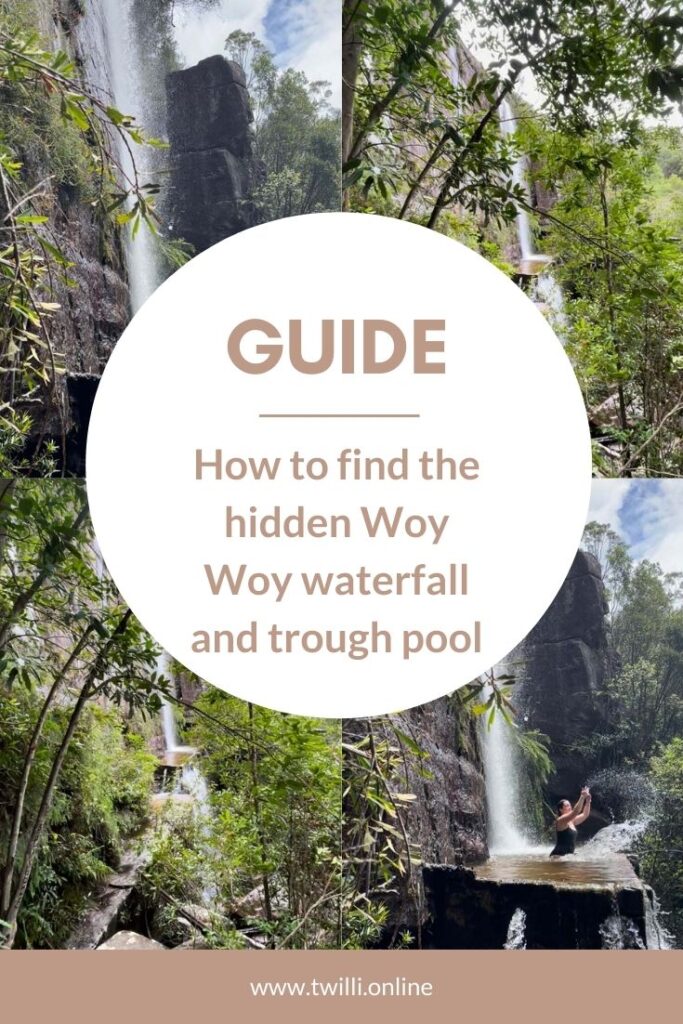
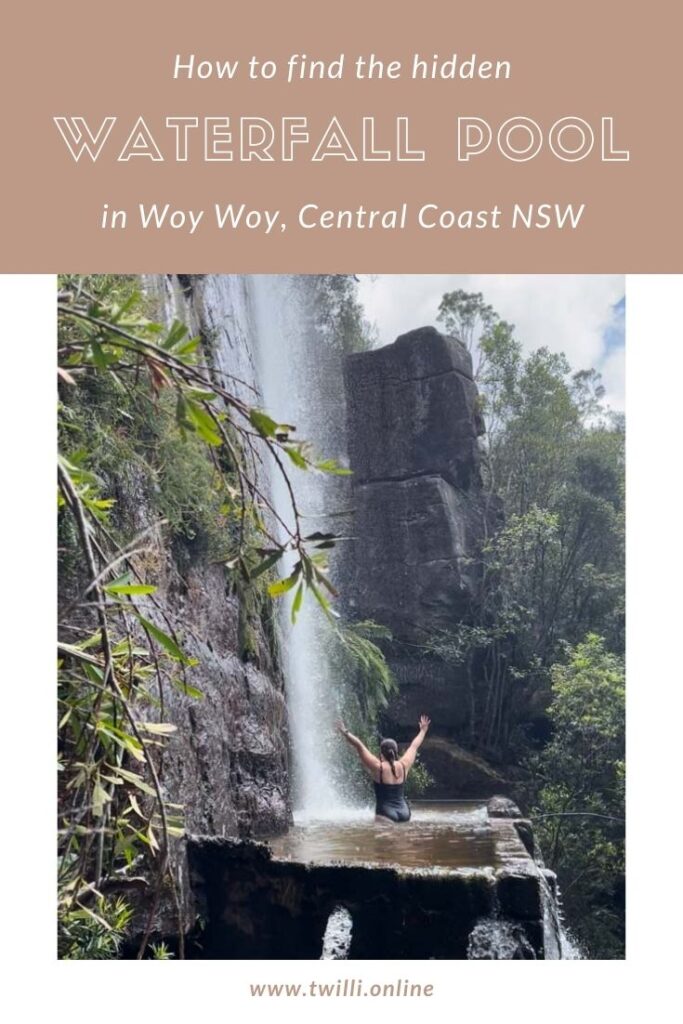
If you want to check out other day trip adventures from Sydney, take a look at my travel page.
Tasmania is one of my favourite places in the entire world. When coming to this island off the south of Australia, it's like stepping into a different world, an untouched and pristine paradise.
Hobart is the capital of Tasmania and was originally established in 1804 as a convict settlement. There are hints of its rich history everywhere you look. Especially on the waterfront, there are rows of beautiful sandstone buildings, repurposed, but still holding that special, unique look like you just stepped back in time.
With Mount Wellington on one side and the ocean on the other, Hobart in winter is easy-going and a beautiful place to stop, reset and relax. The temps are a lot cooler, being so close to the Antarctic circle. But with fewer crowds, it is a great chance to explore in peace and quiet. There's even a chance for snow!
There really is nothing cosier than watching the fire roaring in an old-time pub while sipping on a mulled wine in one of the oldest cities in Australia.
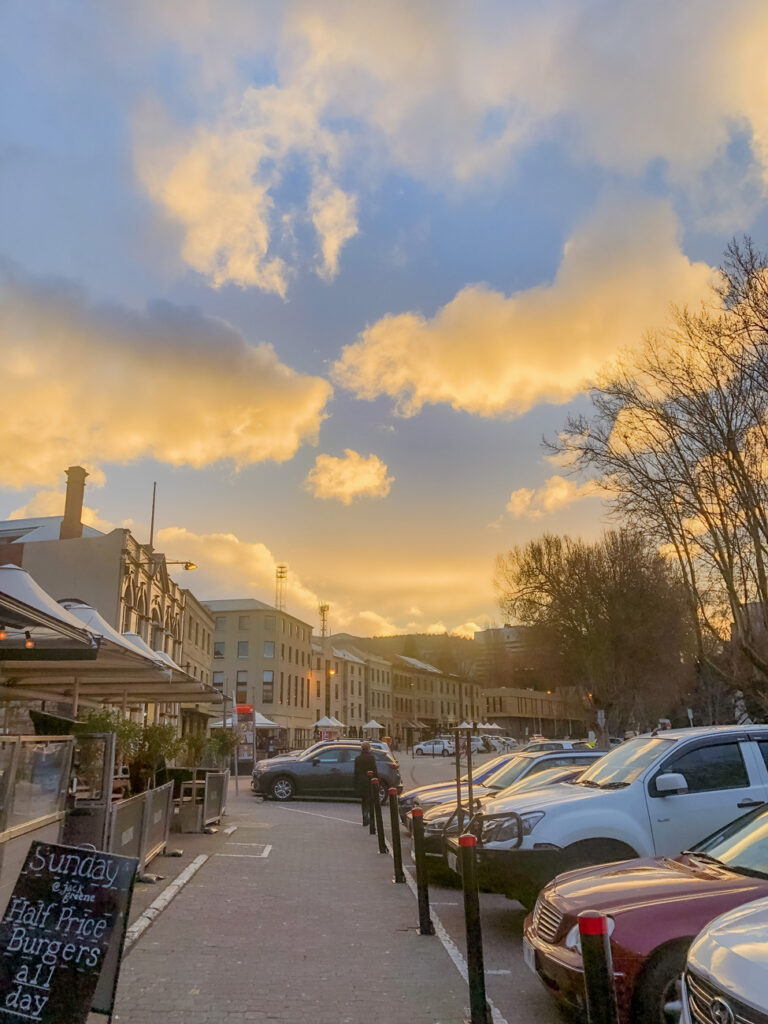
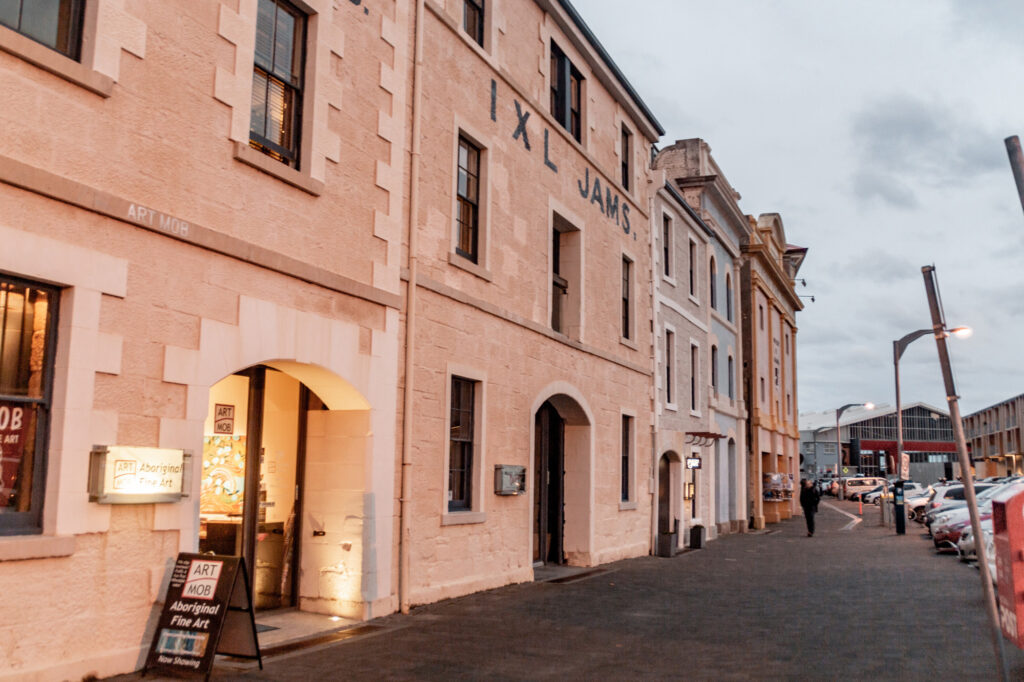
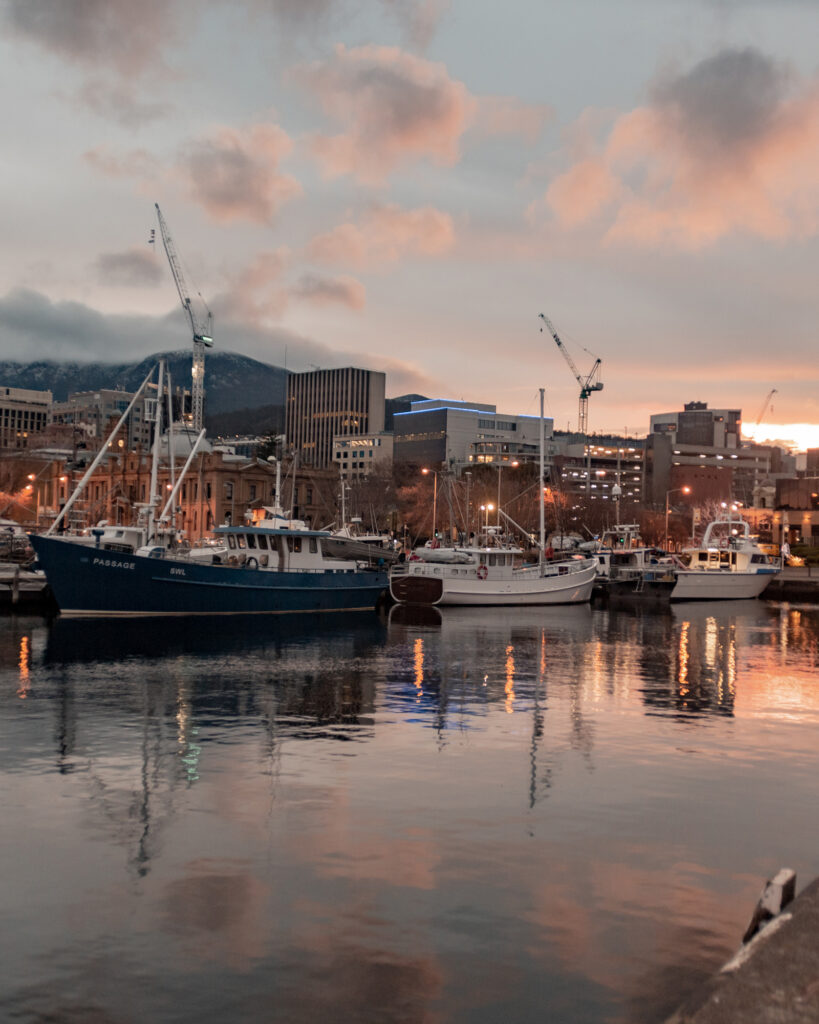
Salamanca Markets are one of the more infamous events not just in Hobart, but all of Tasmania. They are on every Saturday from 8am - 3pm down at the waterfront. You can find anything from produce, clothing, toys, and more being sold by the locals here.
The markets are great for an easy morning stroll. Pick up a coffee, some fresh flowers, and walk through before picking up some produce to take back to your accommodation for a relaxing lunch or dinner. It's also a great place to pick up a unique souvenir.
Salamanca Markets are outside, so make sure you rug up as Hobart in winter is quite chilly. While in the area, check out the nearby museums, restaurants, and bars around the Salamanca area - known for being a vibrant spot, especially at night.
Port Arthur is one of the biggest tourist attractions in Tasmania and is only a 1.5 hour drive from Hobart. I recommend hiring a car and taking a whole day to go and explore the area. There is no public transport, so if driving is not an option, look at day tours that take you there and back.
Port Arthur is full of deep history. It is the best preserved convict settlement in Australia. Many of the houses built by the convicts for the residents still stand and the old fort and prison ruins show you what it might have been like back in the early days of Australia.
Take one of the free walking tours around or wander yourself - there are many plaques, cards and more to help guide you through and teach you about each aspect of the place, full of tragedy and hardship.
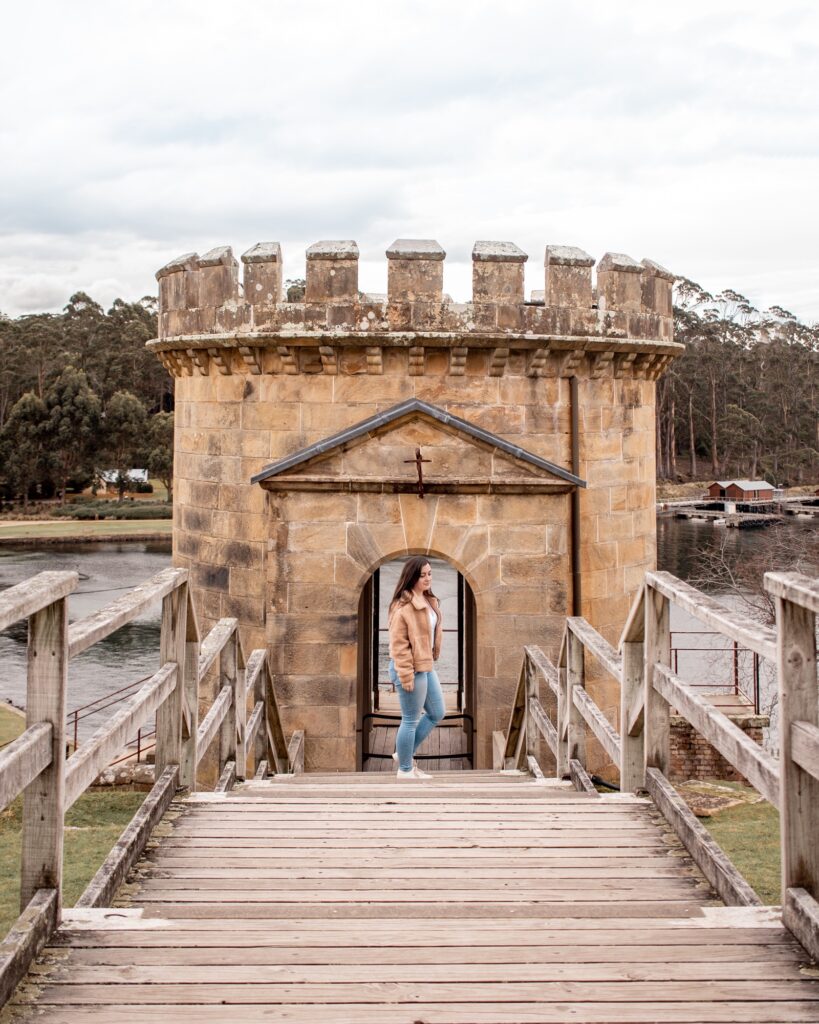
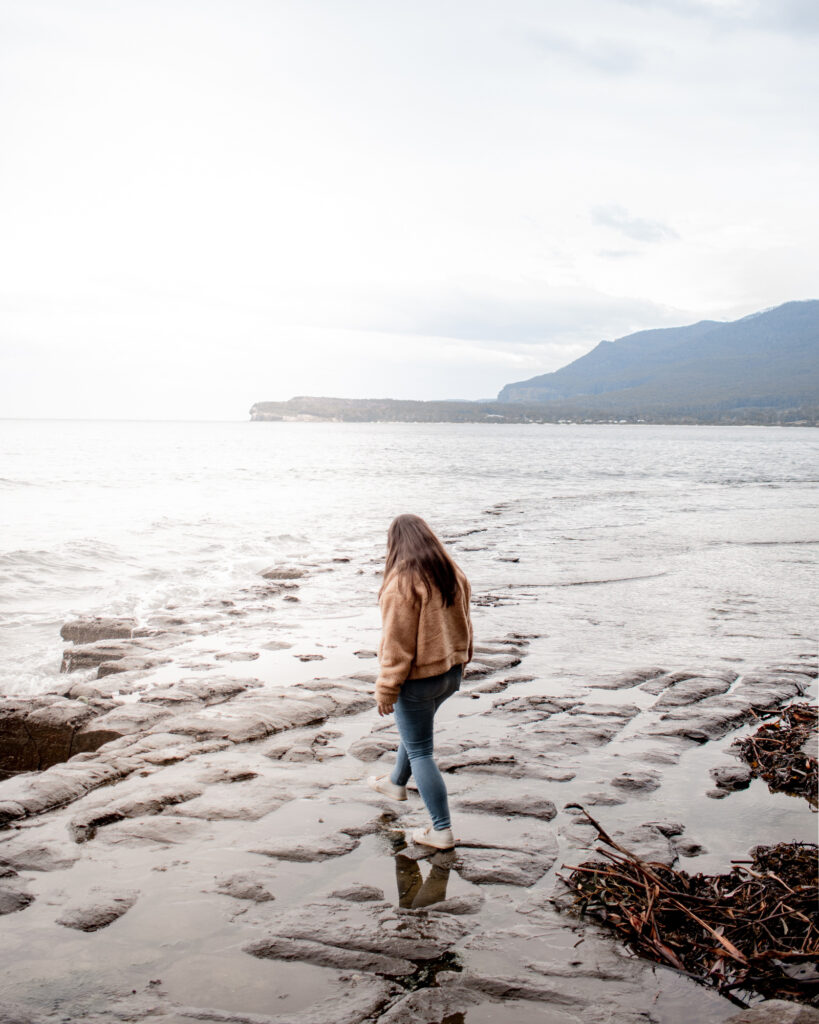
Not only is there so much history to explore, but the area is also naturally beautiful (and haunting) in its own way. With forest on one side and the large basalt cliffs, columns, and ocean on the other, it's a unique place to wander.
I also highly recommend taking the short cruise that is free with entry to the site. This will take you out to the Tasman Sea and back. In Winter it will be cold with that ocean wind though, so bring a warm jacket for the ride.
If you choose to drive, I suggest stopping along the way at several points of interest. Tasman Arch, Devil's Kitchen, the Blowhole, and the natural wonder of the Tessellated Pavement are all must-sees while you are in the area. And if you want to see a Tasmanian Devil, stop in at the Tasmanian Devil Unzoo, a wildlife park dedicated to caring for and conserving the species.
MONA is the Museum of Old and New Art. It's located in Berriedale, which is an outer suburb of Hobart. Getting there is super easy - just catch the ferry from Brooke Street Pier or drive 15 mins out of the centre of town, either with your own car or uber/taxi. I recommend the ferry as the views along the way are beautiful and approaching the museum from the water is how the creator originally designed it.
The museum is an odd one but thoroughly enjoyed by people of all ages and walks of life. Each person takes something different away but just go in with an open mind. It may be confusing and confronting at some points, but with rotating exhibitions and some beautiful permanent pieces, there's something there for everyone.
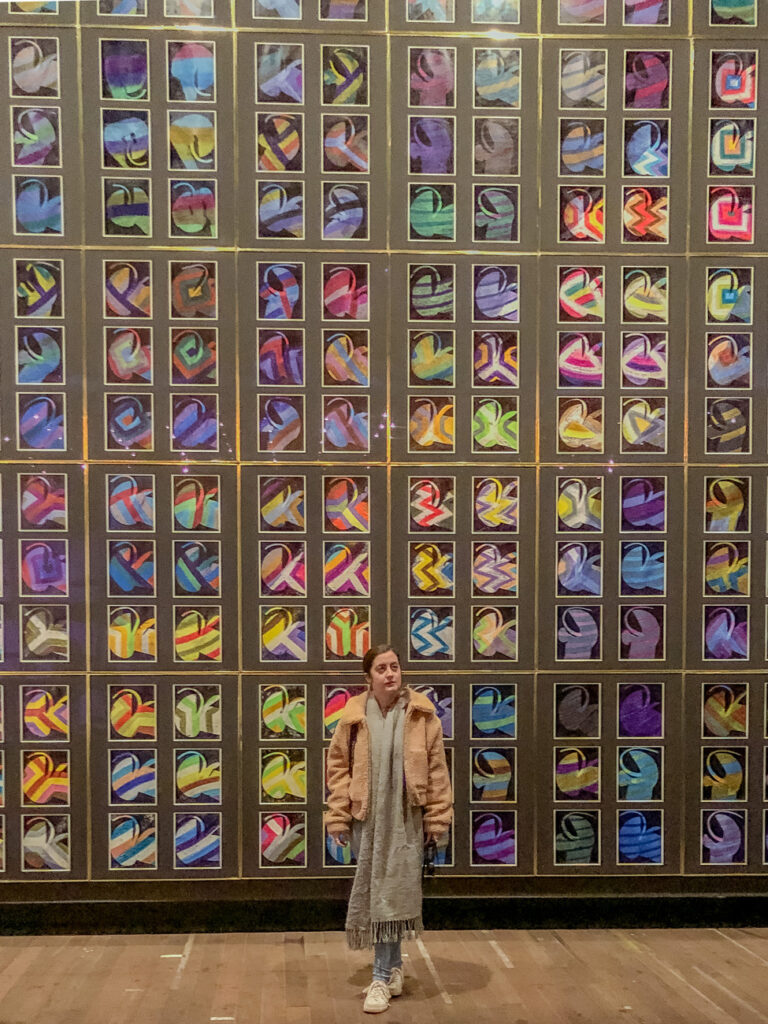
MONA also hosts the annual MOFO and Dark MOFO music and arts festivals which showcase interactive, public art and live performances. Dark MOFO is held in winter and is mostly at night. Grab a drink, get rugged up and be open to the wild ride it is sure to be.
My favourite piece of art in MONA is the Bit.Fall installation. This piece of art consists of drops of water falling from a pipe high up, which when falling create different words that are taken from internet searches. Against the sandstone wall behind it, it is beautiful and mesmerising to watch.
If you liked MONA, or if it was a bit much for you, why not also try out the Tasmanian Museum and Art Gallery. It's free to enter and is full of rich history and culture. I learned so much just from a short visit!
Located in an old sandstone building, near Salamanca Markets, it's the perfect place to go if you want to get out of the cold. This museum was built on the old waterfront line and you can still see the line on the footpath where the water used to come to.
In case you haven't got the message by now, Tasmania and Australia have so much history, art and culture. Make an effort to learn some parts of it and you won't be disappointed.
Just down the road is also Maritime Museum of Australia, with information about shipping and whaling activities in Australian history, and Mawson's Huts Replica Museum, where they have rebuilt the huts used in Antarctica by Douglas Mawson & his team who discovered the location of the south magnetic pole. Mawson's Huts Museum does cost a bit of money, but it is interesting nonetheless.
Mount Wellington is officially known as kunanyi / Mount Wellington and is located on the western side of Hobart, looming over the city. It is covered in snow most of the year, so visiting in Winter can either be a snowy wonderland or quite hazardous. Keep an eye on the weather before you make your trip up the mountain. If you can make it up the top, there is an enclosed lookout with epic views of the city and surrounding area below.
While driving is obviously the easiest option, especially in winter, there are also many walking trails and a hike from the city to the peak you can challenge yourself with.
If you choose to drive, there is a point halfway up Mt Wellington where you can stop, wander to the lookout and there are also toilets and a bbq area. Be mindful that if the weather is less than favourable, the top half of the mountain may be closed and you'll be stopped here, at The Springs. If you want a little bit of an adventure and the weather allows it, park your car here and walk the rest of the way up. From The Springs to The Pinnacle, it is about a 4km trek, but with a difficult grade.
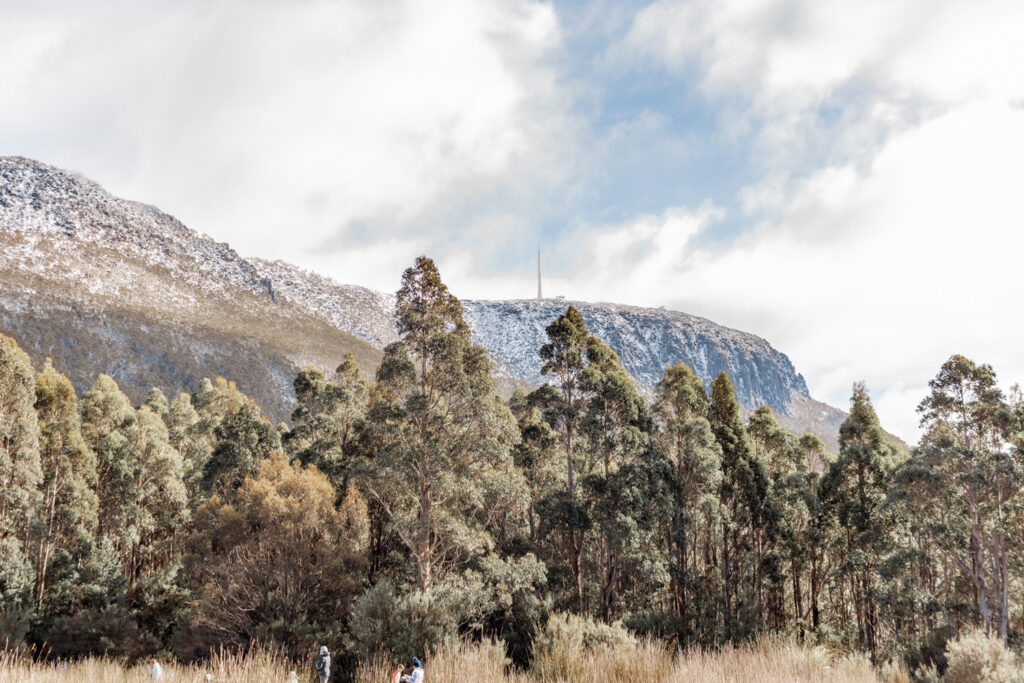
If you want to take on the full hike up Mt Wellington, you can start at Hobart Rivulet, where you can leave your car in the parking area just off Molle Street. Or at the Cascade Trail, just opposite Cascade Brewery, which skips the more urban part of the walk to the base of the mountain. Either way, set aside a whole day to climb and explore Mt Wellington. It is about a 14km hike, or a little less if you start at Cascade Trail.
Taking an evening to stop and watch the world pass you by is highly recommended in the sleepy city of Hobart. Stop in at one of the bars or restaurants on the Elizabeth St Pier or Brooke St Pier and watch the boats sail in and out as the sun goes down.
As for bars to choose from, there's Tavern 42 Degrees South, which is a bit more upbeat but with some of the best views if you choose to sit outside cosy under a heater. The Glass House Hobart is located on Brooke St Pier and is a bit more easy-going. Or The Story Bar, on the other side, is a bit more upmarket and is fully enclosed, but unbeatable views of the city lights at night.
View all these places on the map.
While I'm sure Hobart isn't the first place you think of when I say foodie heaven, they have some pretty cool places. Your first place to look would be Salamanca Rd and Battery Point. Think old-timey pubs, cute cafes and a bar on every corner. My favourite pub we visited was Preachers, mainly because there's a bus parked in their courtyard that's renovated for seating.
Surprisingly, Hobart also has a great selection of alternative options too. When looking for vegetarian and vegan food, I didn't have to look far. My favourite places were the Kombi Cafe and Smoothie Bar, and the Honey Badger Dessert Cafe. Kombi Cafe caters to all alternative diets, including gluten-free, vegan, and allergy-friendly foods. Honey Badger Dessert Cafe speaks for itself - make sure you get their infamous hot chocolate and any of the food is delicious with pancakes, waffles, and more!
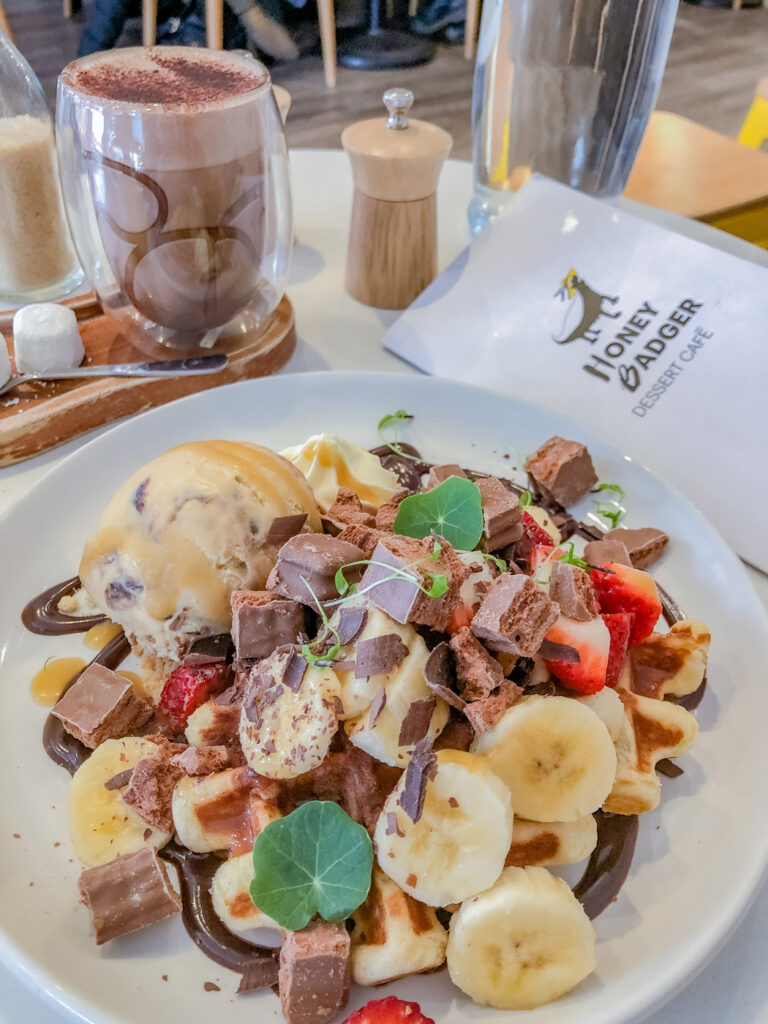
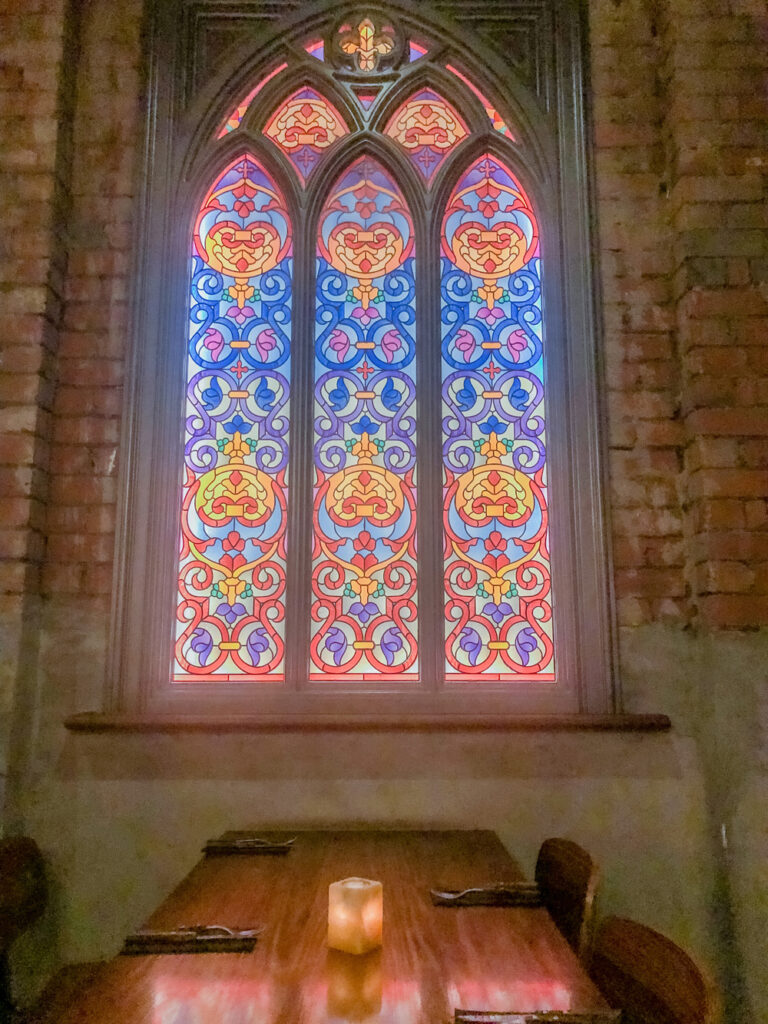
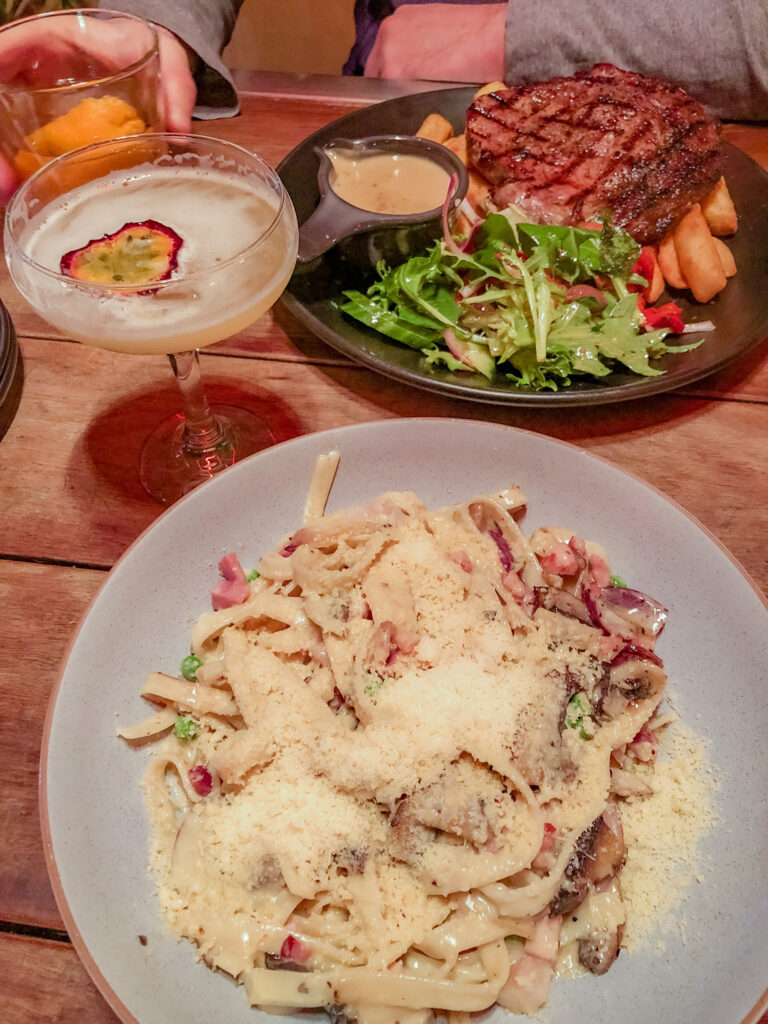
If you're staying a bit further north, there's still no shortage of amazing, insta-worthy places to eat at. I recommend Pancho Villa for dinner. Pancho Villa is a Mexican restaurant that is decked out like an old school cathedral, stained glass and all. Definitely get the guac and some pictures here. Also, for brunch or cafe vibes, go to Born in Brunswick. With clean interiors and food that is drool-worthy in looks and taste, you just can't go wrong.
Hobart is one of my favourite cities, all year round. I hope after reading this that you give Hobart in winter a second thought and it helps you plan things to do and see while you are there. Also, why not combine this with a roadtrip around the rest of Tasmania?
Let me know if you have any places to add and if you try any of them after reading this post.





Are you looking for the perfect weekend escape from the hustle and bustle of Sydney? I have THE perfect place for you to go. Think wineries, great food, views for days, constant events and all the best spots to sit back and relax, or party it up with your friends - there are so many great things to do in Hunter Valley Wine Country!
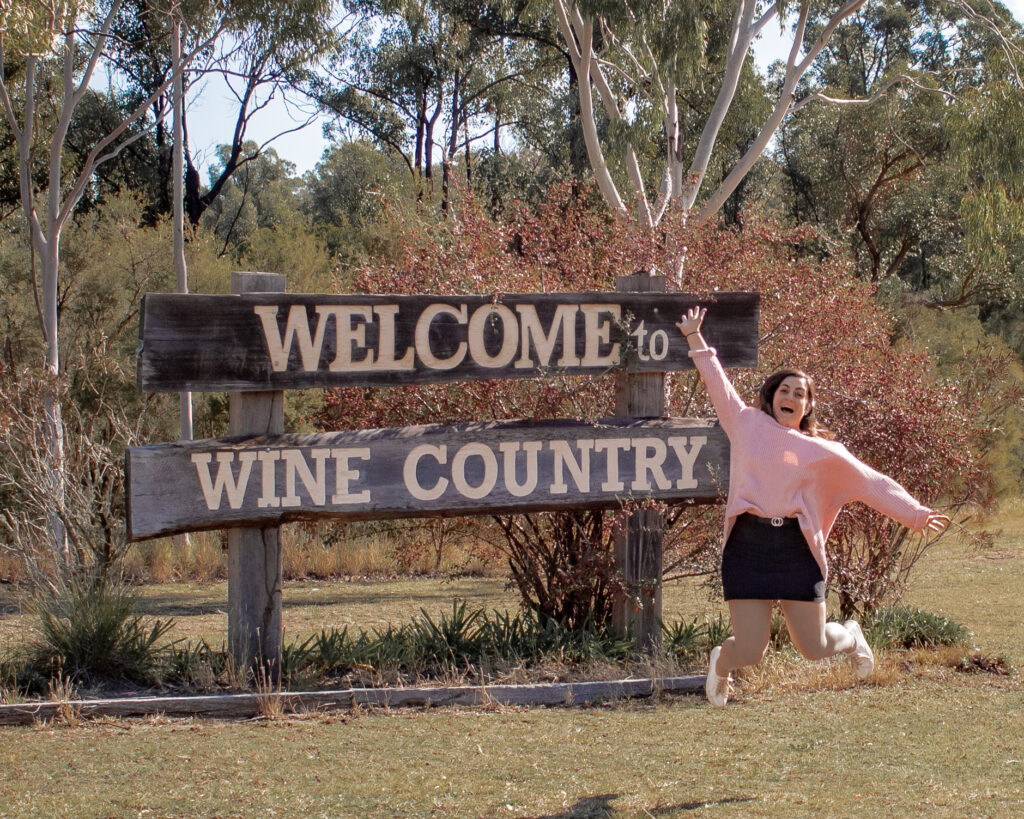
The Hunter Valley is located within a few hours of Sydney. If you drive, it shouldn’t take you more than 3 hours to get there once you’re on the highway.
Get some girls together and do a road trip. I recommend taking a few stops along the way and have fun blasting some tunes. if you don’t have your own car, you can rent one through a rental company, or there is CarNextDoor or GoGet to help you get on your way.
If hiring or driving a car is not an option, there are other ways to get to the Hunter Valley.
Train services run from Sydney's Central Station to Newcastle suburbs, and Hunter Line train services run between Newcastle and the Hunter Valley towns of Maitland and Singleton. There are also some regional trains that run between Sydney and the Maitland area, close to hunter valley.
But the best option, in my opinion, is hiring a van with a driver for the day! There are many tour companies that offer this service.
Some that I know of include Hunter Valley Wine Tours. They pick you up from their Sydney location, drive you to the Hunter Valley with some wineries, food and sights, then drive you back again. No need to worry about going overboard!
Staying in the Hunter Valley overnight can come included with multi-day tours, but I like to splurge a little and stay either on a winery or in one of the resorts.
I've stayed in both Cyprus Lakes, Wine Country Villas, the Crowne Plaza and in an airbnb in nearby Singleton. My favourite for a romantic couple getaway was the Villas, overlooking the vineyard. For groups and families, I would recommend Cyprus Lakes.
Cyprus Lakes is giant and includes so much with your stay like a pool, restaurant, even a golf course. You can book them directly, or some are found on booking.com or Airbnb. The villas are beautiful, nestled in a bush setting, so expect privacy and great views.
You can get a 2 or 3 bedroom villa, so there's room for all your friends and family. It's located just up the road from Hunter Valley Gardens, and pretty much in the centre of all the wineries. So you're close by all the main things to do in Hunter Valley.
The Crowne Plaza was great, I can't fault them at all, but are a bit out of the way if you are getting around the Hunter Valley yourself. Crowne Plaza would suit couples or groups that are just interested in a luxe hotel with all the amenities.
There are also quite a few Airbnbs around the area. Search for the suburb of Pokolbin to stay close to the wineries, or Lovedale is also a good and close area (but a bit further out).
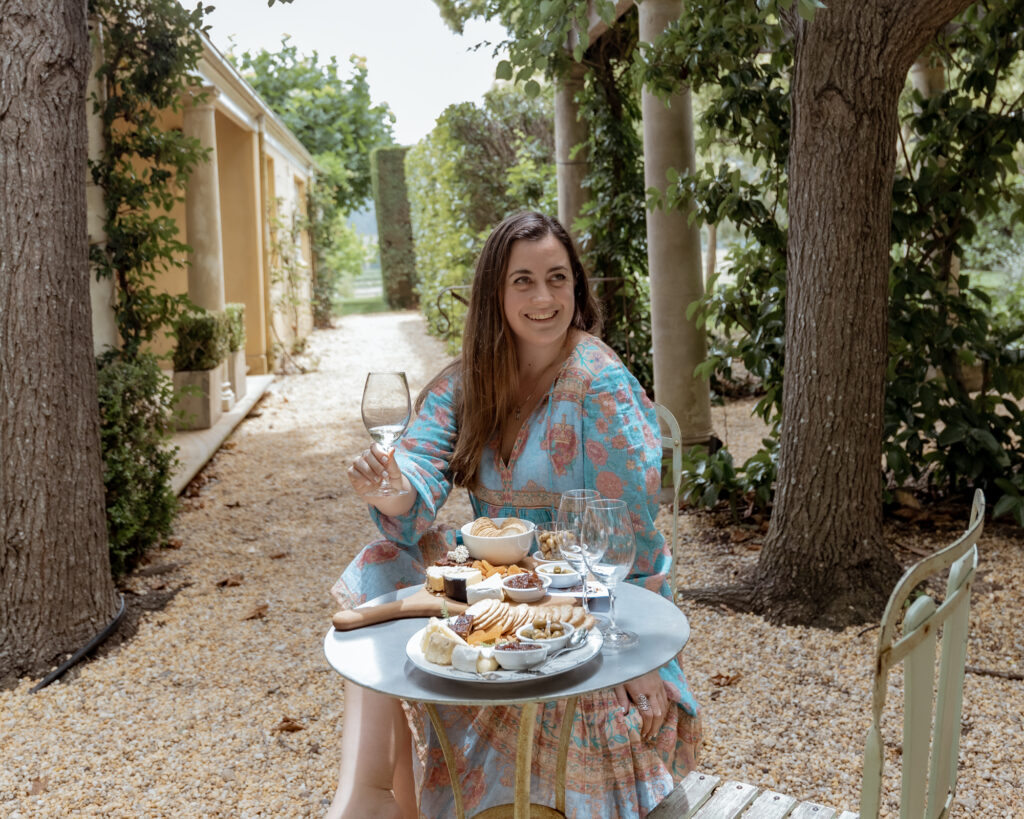
Peterson House is famous for its sparkling wine and its breakfast menu. Start your day here with some food and a drink at Restaurant Cuvee, as it's conveniently located at the gateway to the Hunter Valley winery area. The views are spectacular! Then why not make the cellar door and chocolate shop located on the grounds your first pitstop on a day of adventure.
The Deck Cafe is located in Lovedale, and is a bit further out of the way than some other cafes in the area. But this is one worth the trek. The food looks and tastes great, and the outdoor seating overlooking the dam is beautiful. It has a rustic, vintage charm that keeps me coming back for a little bit of foodie escapism.
You cannot go to the Hunter Valley and not stop in at the Smelly Cheese Shop. Located in Pokolbin, this quaint shop is right in the middle of the action. I highly recommend coming here to pick up some picnic supplies (they don't just sell smelly cheese!). A picnic is one of the best things to do in Hunter Valley. Grab some bread, cheese and other delicacies and when you grab a bottle or two from your cellar door visits, you have lunch all sorted to enjoy in one of the amazing vineyards in the area.
One of my favourite restaurants in the Valley, Oishii is delicious food overlooking Teatree Creek, right in the centre of things. The atmosphere is buzzing, and if you have a larger group for a weekend getaway, you can request to be placed in their private dining area.
Pick a local bottle of wine, grab some sushi or a curry and dive right in. If you do plan on drinking a few at dinner, make sure you have a taxi on standby as walking back to accommodation could be risky on the dark streets.
This restaurant is a bit out of the way, but for good reason. Winding your way through the hills on the way to this hidden gem is an adventure in itself. When making a reservation, ask to have an outside table. The view when you get seated is breathtaking, with rolling hills and vineyards as far as the eye can see.
Bistro Molines is a quaint, rustic french restaurant. I highly recommend coming here for sunset to celebrate a special occasion. But make sure one of you can drive, or be prepared to spend extra on a taxi, as it is out of the way from the Valley itself.
If you prefer to stay closer to home, any winery in the area will usually have their own restaurant attached to it. And they are all amazing! Take a look around while on your wine tasting tours and find the perfect place to circle back to for dinner for you and your group.
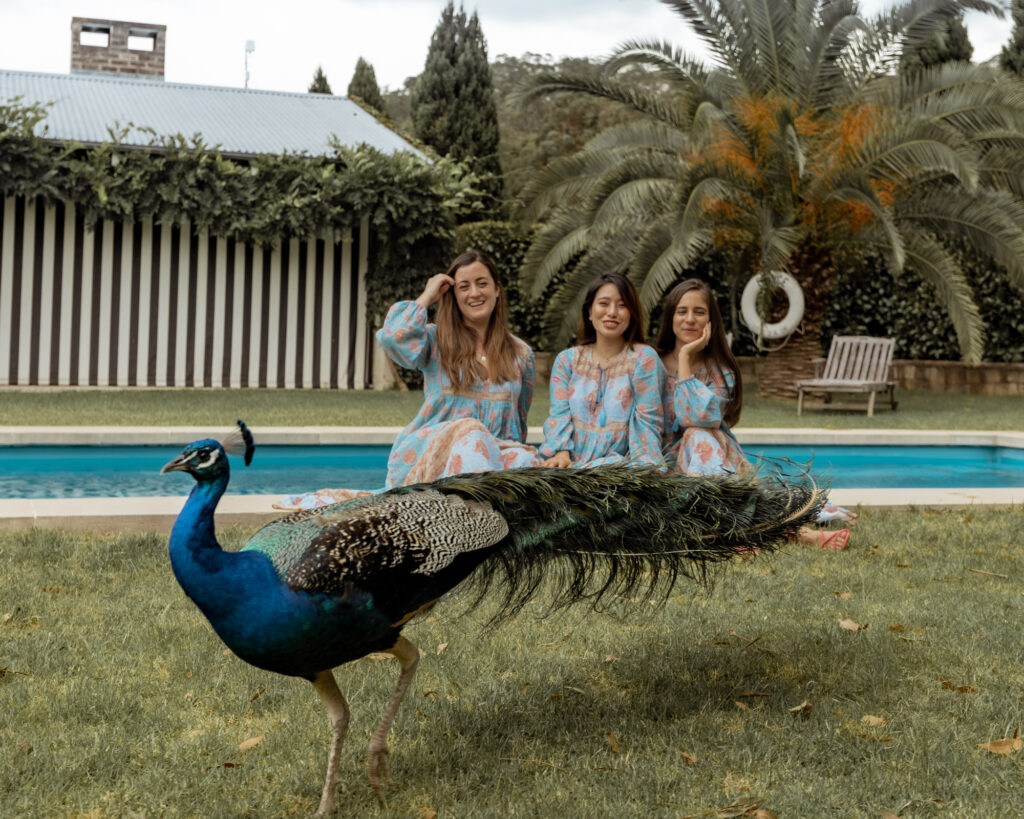
Hunter Valley is a great place to shop for unique, boutique fashion, homewares and more.
One of my favourite places to go is Peppers Creek, with a little bit of everything on offer. Peppers Creek also has the most beautiful indoor/outdoor chapel overlooking the vineyards - check it out, even if you aren't religious it can be a great photo opportunity.
The local markets are also a great place to pick up a little something. Some of my favourite jewellery, I picked up at Handmade in the Hunter. These markets are located in Kevin Sobels Wines and they are on most weekends, but check the website for more information.
Even in the cooler months, there are many events on to go and check out. Hunter Valley Wine Festival is a perfect weekend escape and is on in June. Full of good wine, food, beer, cider, and more all in one place - it's a great day out. Then why not stay overnight and go explore more things to do in Hunter Valley the next day (if the hangover isn't too much).
If you have time, you can also head out to Broke. A little further from Sydney than Pokolbin, Broke has more wineries, restaurants and shops that have less of the crowds, but just as worthy of a visit. Krinklewood Biodynamic Winery is a great place to start, with beautiful grounds and wines to taste.
Hunter Valley is also a popular place for festivals, concerts, events and more. No matter which weekend you choose, there will more than likely be something to entertain you.
Last, but not least, even if wines aren't your thing, Hunter Valley has some amazing spas. Why not treat you and your girls (or guys) to a spa day! Massages, facials, mani pedis.. the works!
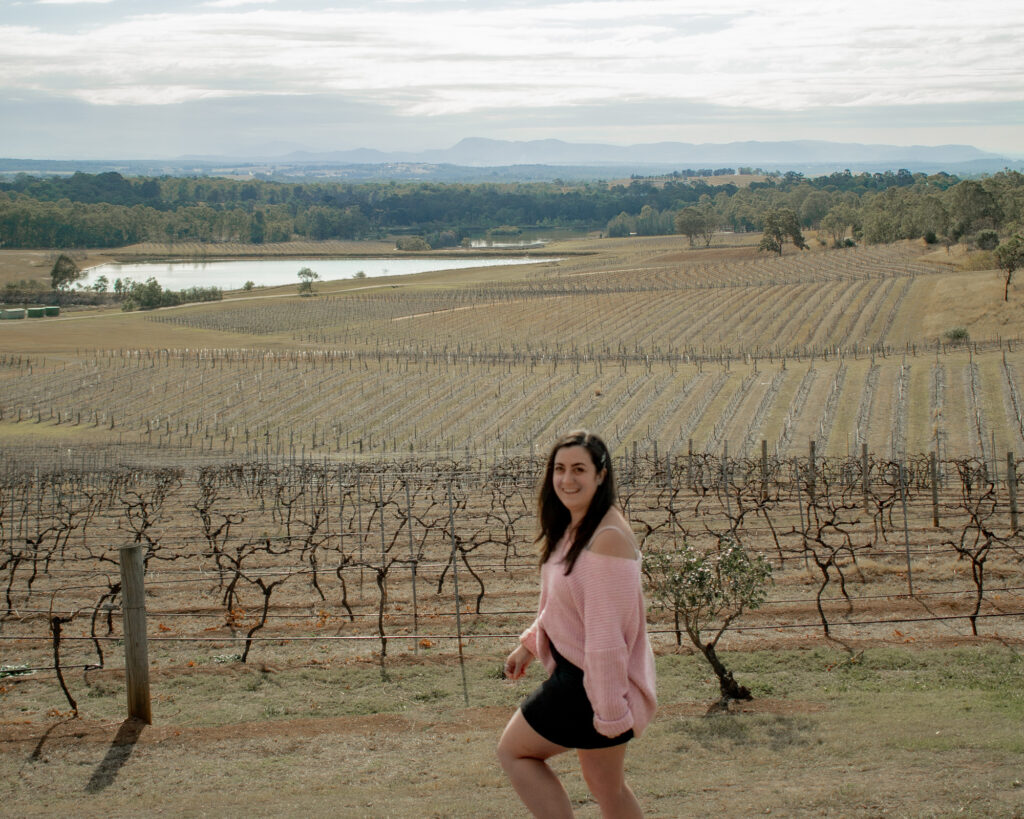
Audrey Wilkinson has the best view of Hunter valley, hands down. I personally love their rose wines and dessert wines. Grab a bottle after your tasting to go and sit outside on the hill and enjoy the sunshine and vistas.
Blueberry Hill wines is my pick for the hidden gem of the Hunter Valley. It is a bit further out of the way, but their set up is worth the visit. It's small and boutique, with beautiful views and food while you have your wine tasting. But I highly recommend packing a picnic to sit in their outdoor area for a quiet lunch.
Hungerford Hill wines are in my top picks because of the interesting buildings. Their wines are good, but I recommend visiting this winery for the photo opportunity, especially if you love unique architecture.
One of the most infamous wineries in the Hunter, your visit wouldn't be complete without stopping in at Tempus Two. This winery is situated in the main area of Pokolbin with restaurants, shops, views and, of course, a great selection of wines.
If sparkling wines are more your speed, you can't go past Peterson Wines. They are famous for their bubbly. I recommend starting your tasting tour here, as their restaurant is great for brunch. They also have a chocolate shop next door, so pick up some treats while you're there.
If cheese boards, peacocks and a european style courtyard amongst the vines isn't enough to get you to head out to Broke and see this winery, I don't know what is. Even though Krinklewood is a bit further out, this winery is a must on my list for things to do in Hunter Valley!
While not technically a winery, Hunter Distillery is a must when in the area. Most tours stop in here for a pit stop between the wineries. Hunter Distillery has a huge selection of different flavoured gin, vodkas, schnapps and liqueurs, which you can drink straight, mixed, or even with food (I love to have my mango liqueur over ice cream).
So, have I convinced you yet? Let me know if you are going, have gone and what you enjoyed or if you have any questions!
If you have any other tips for things to do in Hunter Valley, let me know in the comments!
Looking for a staycation weekend instead? Check out my blog review of the Shangri-La Sydney.
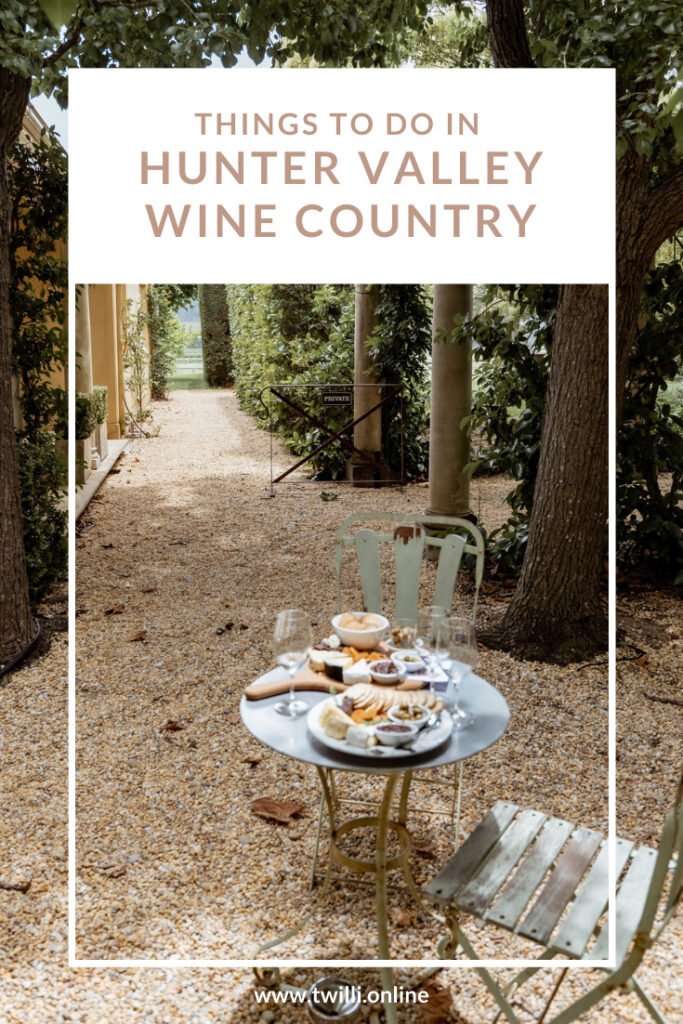
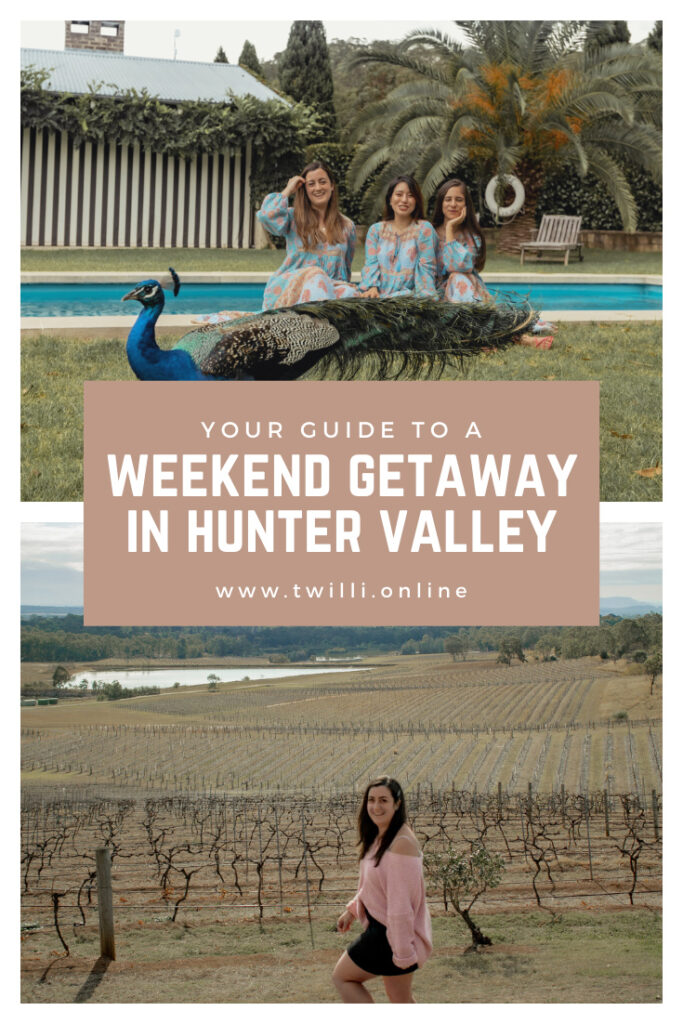
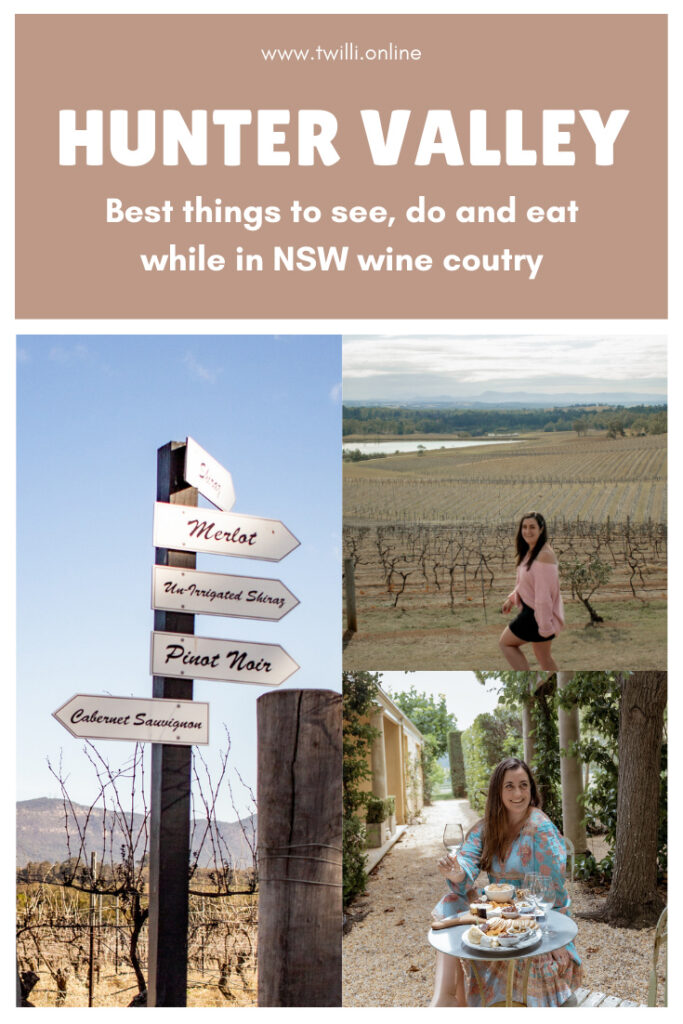
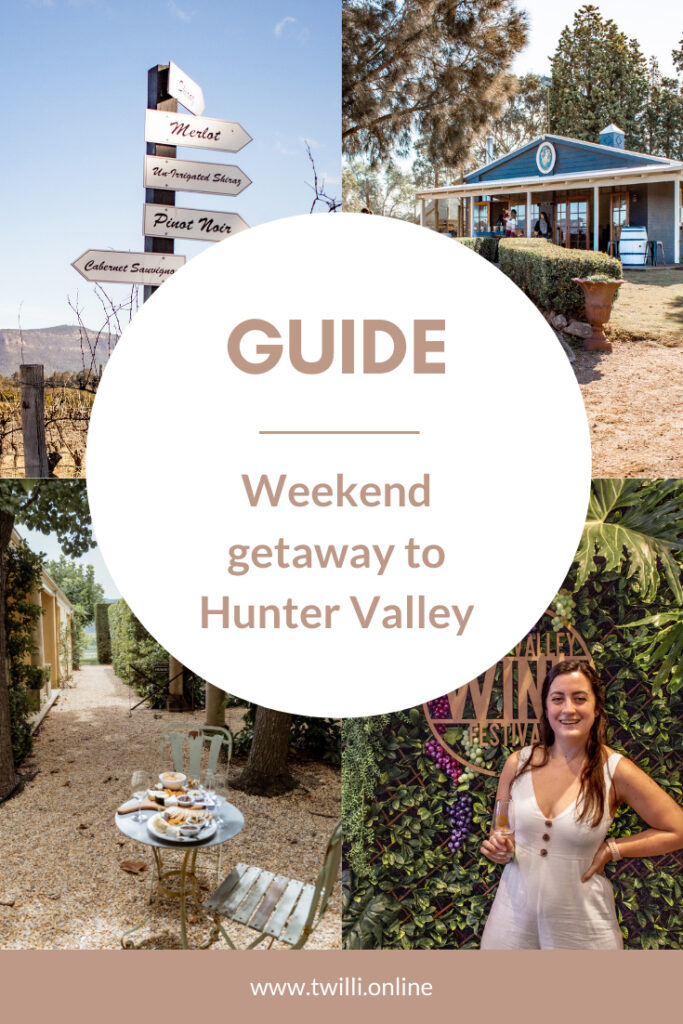
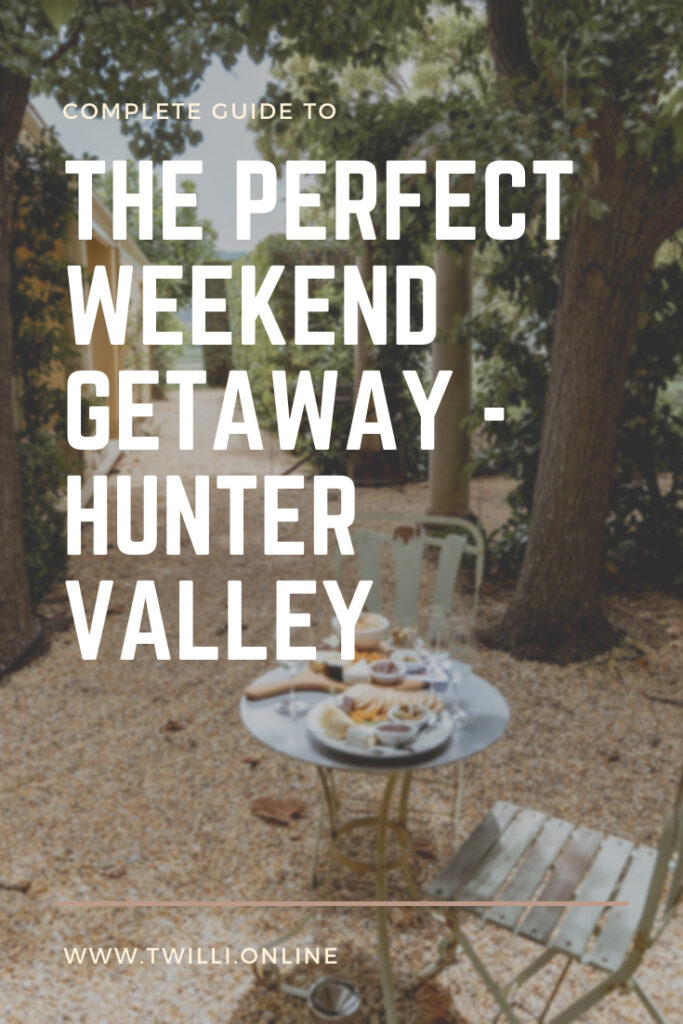
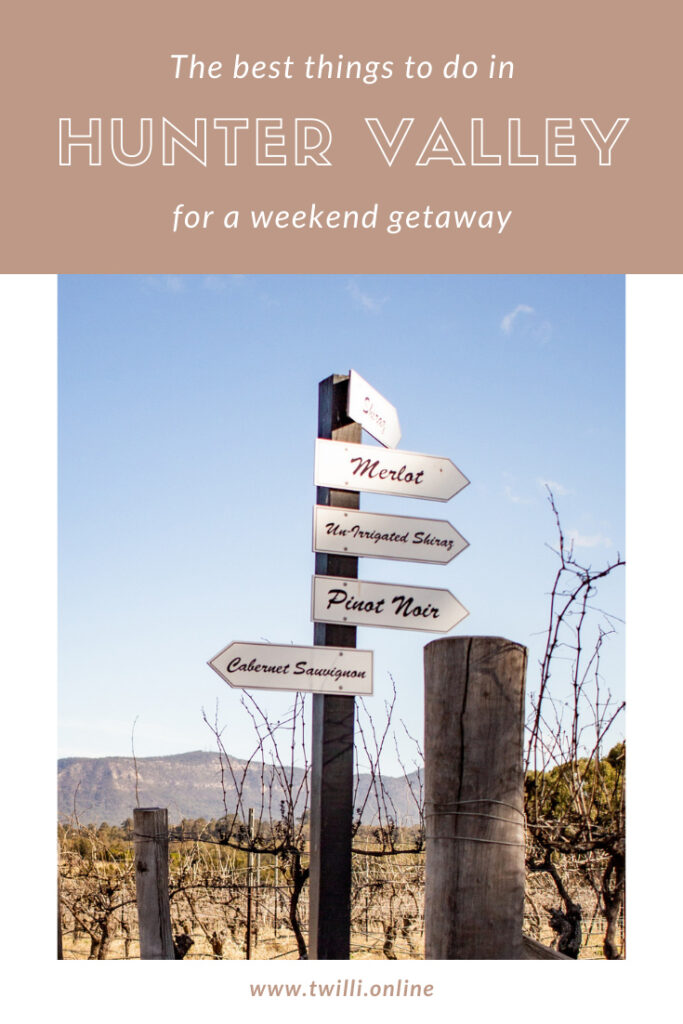
I am a huge fan of staycations. We don't always have the money to go on a lavish overseas holiday. A quick weekend away (or not so far away) works just as well to revitalise our spirits.
Last year I got the chance to stay at one of my absolute bucket list hotels - The Shangri-La Sydney. Knowing that The Shangri-La has some of the best views, amenities, and service, I was excited to live it up for a night in this amazing hotel.
The Shangri-La Hotel Sydney is located right in the heart of The Rocks. This area of the city is one of the oldest with sandstone buildings, cobblestone streets and a modern twist here and there.
Many of the rooms here have stunning views of the Sydney Harbour Bridge and Sydney Opera House. Alternatively, you get sweeping views of Darling Harbour and the city on the other side - something to marvel at, especially at night.
Before we checked in to start our staycation, we visited the infamous Morrison Bar & Oyster Room. These guys have $1 oysters and yummy burgers to enjoy and with a glass or pint of your favourite drink, how can you resist?
If Oysters and Burgers aren't tickling your fancy, there are a host of other restaurants, cafes and bars within stumbling distance of the hotel that you can enjoy. The hotel even has it's own restaurant and bar that you can experience, but more on those later.
The building hosts a number of rooms for all walks of life. All rooms are spacious and beautifully decorated.
We chose to stay in the Horizon Club Sydney Harbour Room, with views of the bridge and Opera House. The best part of the entire stay is the view from your room as the sun rises over the Opera House, lighting up the sky with pinks and oranges as you sit curled up in your cosy blanket. Even if you aren't a morning person, you need to wake up early for this.
It also came with the extra perks of the Horizon Club such as free breakfast, canapes, drinks and the coveted late checkout. Any extra time you can get to enjoy the full experience of the hotel is worth it.
The arrival at the Shangri-La Sydney is also one of the best I've ever had. The check-in is prompt and polite. Tip: even if you don't have a Horizon Club room, ask for a late checkout and they will do what they can to accommodate you.
Welcoming someone into your home is a pleasure, and Shangri-La Sydney do it well!
When you get to your room, what we found extra delightful was the welcome tea waiting for us, warm and delicious. It came with a small note. We learned providing tea on arrival is a symbol of welcoming guests and neighbours into your home. It is a way of showing respect to those visiting.
Safe to say this first interaction set the tone for our whole staycation.
The rooms also give you the option of a pillow ordering service, free wi-fi access, a TV and DVD system and access to the gym, pool, spa services and more offered within the building. There is a workspace too if you must work. It also comes with international plugs, so no need to worry about which cord goes where when setting up your space.
We wandered around the hotel for a while, checking out the pool and spa with a quick dip of our toes. The gym was right next door and had everything you might need to get your body moving. It was really spacious for a hotel gym!
We also looked at the spa offerings and was pretty tempted by the massage and facial. If I stayed here again I would definitely make the time to spend a couple of hours in that relaxing space.
Please take note: Blu Bar on 36 (the cocktail bar on level 36) will blow your socks off! This isn't an exaggeration.
This is the perfect place to watch the sunset while sipping on a drink or two. Head here before your dinner at Altitude restaurant. Just check sunset times before you go so you are prepared. It is busy, so get there about 30 minutes to an hour before the sun goes down.
The drinks can be a bit pricey, but when else do you get a view overlooking either Watson's Bay or Sydney Harbour with the bridge and Opera House, with an excellently made cocktail in hand.
Just sit back and relax with table service and super friendly and knowledgeable bar tenders catering to you as you watch the sun slowly lower beyond the horizon and the city change into a rainbow of colours before your eyes.
When the sun has set and you are ready for some food, head to Altitude restaurant. Located right next door to the bar, it also has great vantage point over the harbour.
We chose the 3 course menu and it was everything I hoped it to be and more. I wanted that dinner to last forever.
The views, the food, the wine, the service. For that time I got to feel what it's like to be in heaven and I still dream about it even now. (Am I exaggerating too much? I'm not sure.)
To be honest, I let the waiter pick my food for me so I couldn't even tell you what I had. Everything on the menu looked so amazing and I couldn't choose.
When ordering, I told him to chose for me which ever dish he thought I would like the most and he was spot on. If you like surprises, I highly recommend doing the same. I received food I probably wouldn't have picked on my own and this is my favourite way to do it.
We stayed to enjoy the lights twinkling over the city as we had another glass of wine. We really didn't want to leave.
It was a slow, satisfied walk back to our room after this. The night was perfect and the sleep would be the cherry on top. We left the curtains open and enjoyed the view as we drifted off.
I woke up early the next morning to enjoy the sunrise from our window. The city turned pink, orange and yellow as you could see the streets becoming busier below. It was a surreal feeling.
The previous day we had taken full advantage of the complimentary afternoon tea that was included with the Horizon Club rooms. With sushi, quiches, fruit, scones and so much more available, it was a great opportunity for a bite to eat before our drinks at Blu Bar.
With high expectations, we tore ourselves away from the view to head to breakfast.
Shangri-La Sydney have one of the best spreads for breakfast I have experienced. Bottomless coffee and tea, hot breakfast, cold breakfast - they have it all. I chose some scrambled eggs with avocado, bacon and toast.
The area in which they have the complimentary meals also has sweeping views of Sydney harbour (sensing a trend here?), so we stayed a little while longer and enjoyed the morning eating, sipping and chatting.
With our late checkout time approaching, we headed back to our room to pack up and that was that. One last snap of the view from the room and our 24 hours in Shangri-La Sydney was over.
After checking out, which was super simple and quick, we decided it would be an amazing opportunity to explore a bit more of the area. We hadn't left the hotel the whole time we were there.
You can check out the Opera House and The Royal Botanic Gardens - a beautiful, peaceful walk I highly recommend.
You should also have lunch at one of the many cafes around The Rocks - some of my favourites include Firestone Sydney, The Tea Cosy and Caminetto. You can also go for a drink and bite to eat at Opera Bar!
After this you can wander around the free exhibits at the Museum of Contemporary Art, or if you are there on the weekend, check out The Rocks markets.
There is literally so much going on around The Rocks and Circular Quay in Sydney that it is impossible to not have things to do.
To book a Shangri-La Sydney staycation (or vacation), check out booking.com - the cheapest rates and the latest info.
Thinking about booking a stay for your birthday? Check out my blog post on all the freebies you can get on your special day.





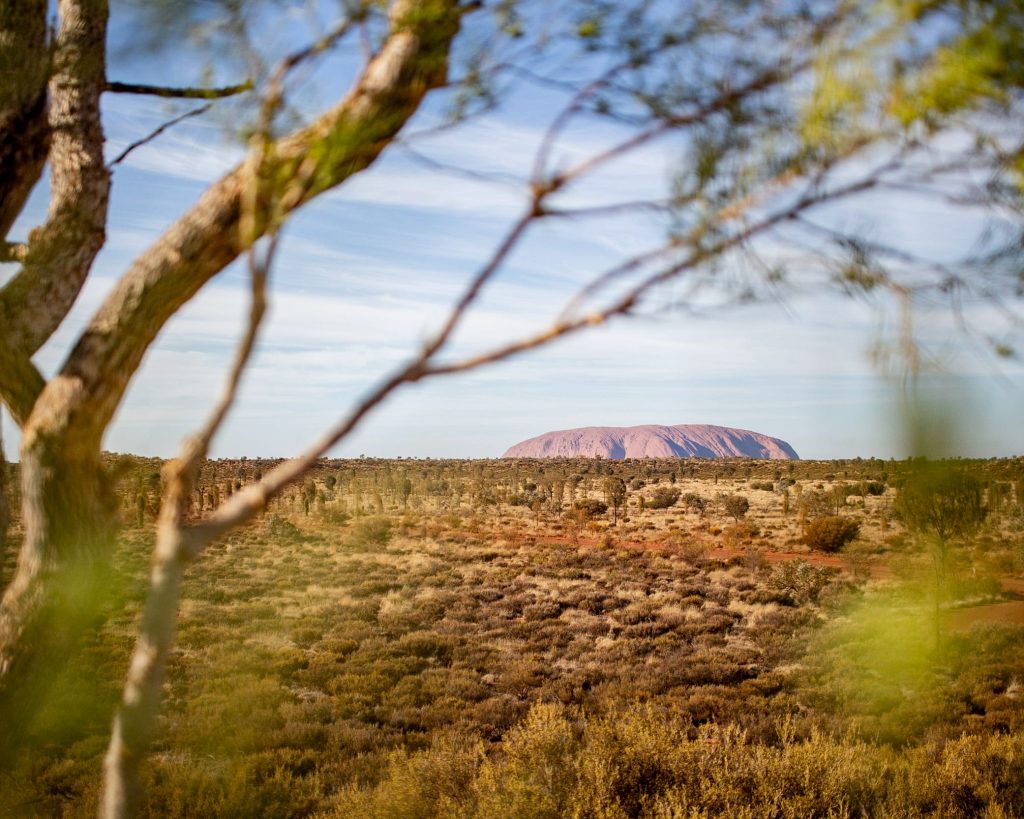
Visiting Uluru is a must. For Aussies, for travellers, for everyone. It's a right of passage - have you really been to Australia if you haven't been to Uluru?
Flying from Sydney, getting to Uluru was a mere 3.5 hours. 3 hours from Melbourne, or 2 hours from Adelaide. Not too bad. You can fly with Jetstar or Virgin Australia into Connellan Airport, the name of the local airport and it's a quick 10 min shuttle ride to the resort from there.
You can also drive from Alice Springs, Darwin or Adelaide and experience more of the landscape that makes this area truly unique. Who doesn't love a good roadtrip?
The mistake that most tourists make in visiting Uluru is that they go during Australian summer.
I understand that this is high travel season for a lot of people, but unless you can handle up to 55C days and a million flies trying to get into every open hole in your face, your best bet is to go during winter. The weather is less humid and cooler (about low to mid 20s during the day and around 10 during the night).
We went at the end of Autumn and it was still hitting 30C when the sun was up. Something to keep in mind considering that once you're out at the rock, there is not a lot of shade to keep you cool.
I've also heard people mention that a day or two is enough to see the area. I highly disagree. We did 4 days and it was just enough time to see everything major there is to see but we also could have done more.
The only place to really stay close to Uluru-Kata Tjuta National Park is Yulara, which is entirely comprised of Ayers Rock Resort. All hotels, restaurants and amenities are owned by them. It's its own little town with police station, supermarket, petrol station and more.
There's something to suit everyone though, with a campground, backpackers, family hotel, boutique hotel and more high end luxury hotels. We stayed in Desert Gardens Hotel in a Rock View Room, a lovely hotel with the best view of Uluru from the resort. It included a large king size bed, TV, fridge, bath and balcony overlooking the rock. Perfect for a weekend away.
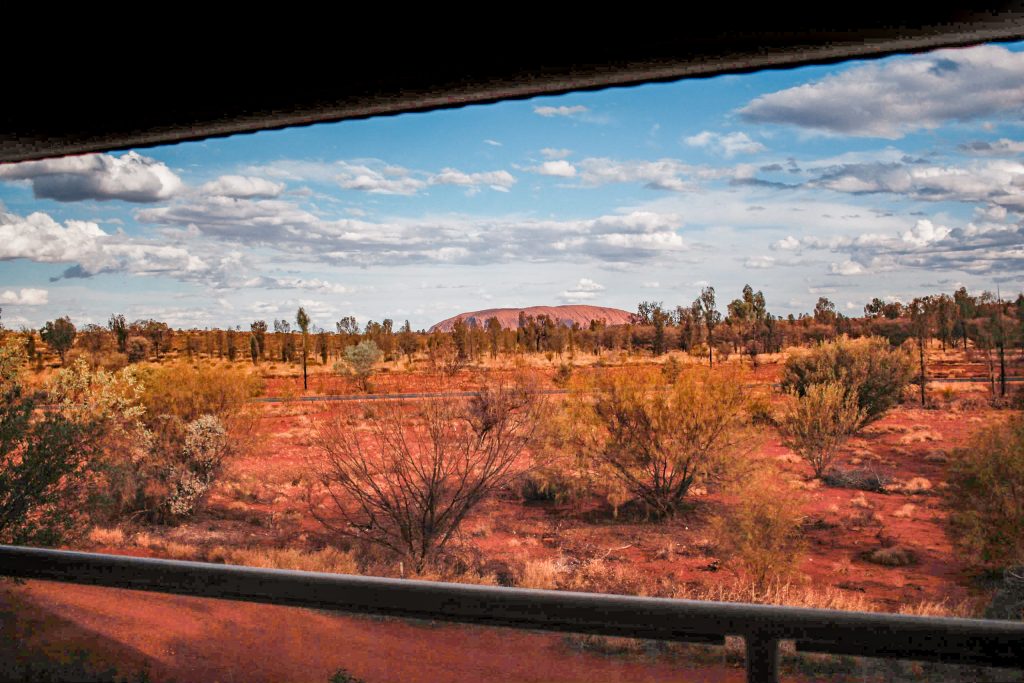
The one good thing about everything being owned by the same resort, is that no matter what you want to do, you can book it all though your own hotel's concierge. We booked our bicycle hire, restaurant dining, bus transfers and more. The staff were super helpful and very friendly. If you don't know what you want to do while there, they can help with that too.
As for food, we ate at several places around the resort. My favourite was either the Pioneer BBQ, a cheaper and more family friendly option, where you choose and cook your own meat - they even have crocodile and kangaroo on offer! - or the Arnguli Restaurant.
We treated ourselves to a meal here and were not disappointed. It was our anniversary and my birthday so we thought, why not? There are several high end restaurants but went with this one for convenience as it is also in the Desert Gardens section of the Resort. Great, indigenous inspired food really put you in the right mindset for the experience!
There are a couple of options when considering how to get around the area. We opted for the Uluru Hop On Hop Off bus, and tours that would take us out and show us around. But there is also the option of hiring your own car, picking it up from either the airport or the hotel, and driving yourself around.
While we liked the bus and couldn't really fault the tours at all as we learnt so much from our guides as well as getting food supplied, we decided that hiring a car would have been better, timing wise.
The bus has four or five transfers to Uluru and Kata Tjuta per day and if you miss it, you will need to wait about an hour for the next. There are specific sunrise and sunset bus times (around 6am and 7pm respectively during winter), so don't worry about that.
But having a car is just an extra level of freedom to explore and visit locations further away from Uluru that the bus doesn't take you.
Whether you choose a car or bus, you will need a National Park Pass. They check this either when you enter the National Park (there is a boom gate and operators), or when you start your tour. This gives you entry to see Uluru, Kata Tjuta and the surrounding park area, and will cost $50 pp for 3 days.
The national park opens at 6am and closes at 7.30pm during May, when we went. Sunrise was about 7am and sunset 6pm, so this gives you plenty of time to enjoy the show and then head back home. Just note that once the sun has dipped below the horizon stay another 15 minutes or so as the colours of the desert around you intensify.
Check opening times and book your pass at the National Parks website.
There are specific tours that go out for sunrise and sunset and take you to the specific viewing platforms around the two formations that are built for that purpose. These are really popular though, so just be mindful.
There are also lookouts in and around the resort that give you uninterrupted views of Uluru and Kata Tjuta.
We found the best lookout was either the Imalung lookout, located right in the centre of the resort looking out over Uluru to the front and Kata Tjuta to the side, or a lookout just off Napala Rd, opposite the war memorial (other side to the turn off onto Kunia St).
Just a note on photography at Uluru - while walking or riding around, please note that there are sections of Uluru that are considered sacred to the local aboriginal people and therefore are not allowed to be photographed or filmed. Don't worry, there are lots of other places just as beautiful that can be photographed so you won't be short on photo ops.
Drone use is also restricted within the National Park. But we found some places just outside of the park that we could lift off and fly around, with just as amazing views of Uluru and surrounds.
Funny story - be careful of Eagles in the area. One tried to attack and take our drone on one of the flights! I've never had my heart racing as much as it was in that moment, with me running to the drone and my partner trying to bring it down so I could catch it and the eagle swooping in.
It must have been hilarious to watch from the outside, but damn it was scary at the time. We were careful to watch out for him after that.
When visiting the rock itself, we took 2 days to fully explore around. If you want to do just one, make sure you go early and use the day to your full advantage.
We went the first day in the afternoon, just to explore the Walpa Gorge section. We were there for less than two hours and really enjoyed the relaxed, short walk and reading the plaques explaining the history and culture along the way.
The second day, we went around 10am to pick up our bikes. It took us around 4 hours to ride around the full base. So for walking, I would add a couple of hours onto that. I recommend biking as it's less stress on your body and easier to explore. Either way, just remember to stay hydrated!
In total, the base clocks in at just under 10km. But with each corner revealing more amazing photo opportunities, you'll be stopping every 5 minutes to marvel at it all.
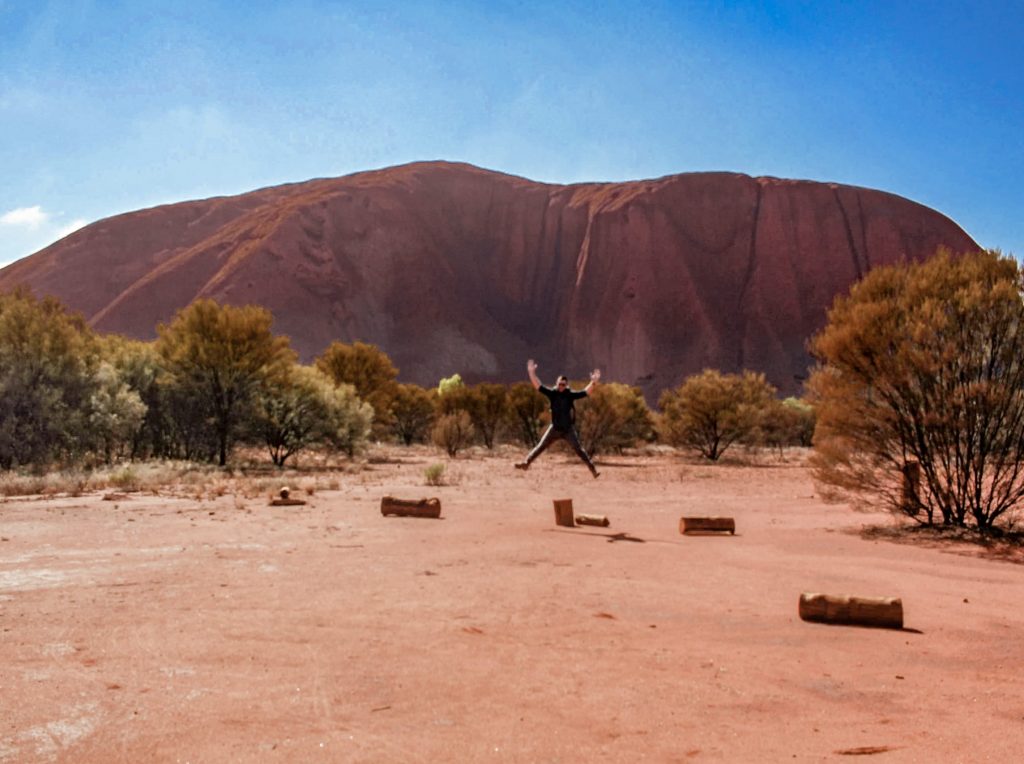
But be prepared. There is barely any shade in some sections, so take with you:
If you are short on time, the highlights of Uluru include Walpa Gorge and Mutitjulu Waterhole. The bus can drop you at the start of these tracks or they have carparks, if you're driving. They are short, easy walks and have trees for shade so they are suitable for all walking types.
You might also want to add some time in to explore the cultural centre, located 2km from Walpa carpark. You can find refreshments, food and a beautiful art gallery. Talk to the people behind the counter and discover a whole new side to the culture of the area. You can also catch the bus back to the resort from here, so we made this our last stop of the day.
One thing about Uluru - please don't climb it. You are technically allowed to, but there are signs everywhere posted by the National Park and the local aboriginal people asking you not to. It is considered disrespectful and it is actually hurting the rock. You can see the white scar that has been created by years of tourists walking and trampling the rock.
The climb will be closed from October 2019, but until then it is up to you whether you make the attempt or not.
Other than Uluru itself, there is so much to the red centre that you need to explore and discover.
We did one tour in our weekend there, a sunrise tour to see Kata Tjuta and the Valley of the Winds. I would absolutely recommend this tour, hosted by AAT Kings. You can book this through the resort.
We started about 5.30am, catching a coach into the National Park and to the sunrise lookout platform where we were provided breakfast and a hot cuppa. It was a bit chilly before the sun was up, so bring a light jumper (as soon as the sun is up, you won't need it anymore!).
It was so peaceful and magical watching the sunrise. We had Kata Tjuta (The Olgas) in front of us, and Uluru to the side (the sun rose behind Uluru from this angle).
After sunrise finished, we were taken deep into the heart of Kata Tjuta to hike through the formation. The first part of the hike was easy, where everyone was invited to join in. The lookout we came to was beautiful, with Mount Olga right in front of us.
After the first lookout, however, they recommended only fit walkers continue on and I could see why. The section from the first lookout to the Valley of the Winds itself was rocky, steep in places and even a bit of bouldering was involved. It was so worth it though. The Valley of the Winds was one of my favourite views on the entire trip. My breath was taken away, in more ways than one.
You can also do trips to Kings Canyon, which takes a few hours to get there and therefore will take up a whole day. They also do overnight tours there. We didn't have quite enough time to enjoy this one, but will be looking into it for our return.
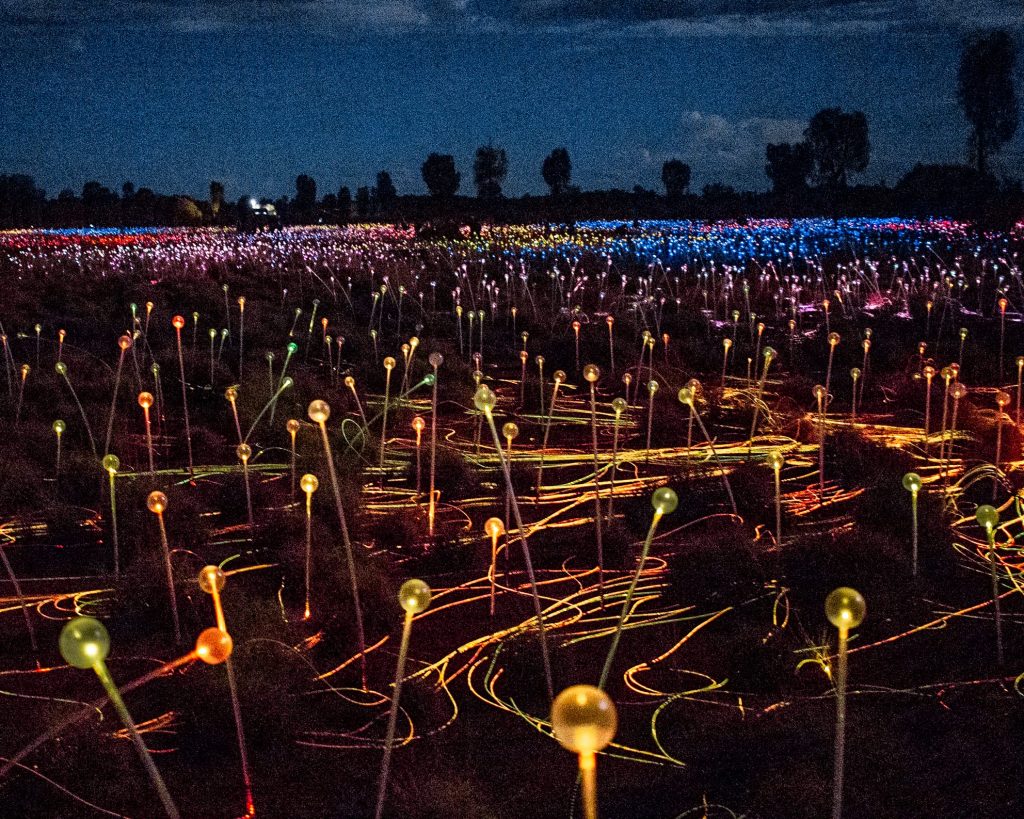
One of my highlights was the Night at Field of Light. This tour is run by the resort and includes an outback dinner (called Sounds of Silence), didgeridoo performance, star talk after nightfall, and entrance into the resident outdoor art installation, Field of Light by Bruce Munro.
It was pushing our budget, but we both knew we had to experience this. And every second was worth it.
They pick you up from your hotel before sunset, drive you to a lookout just outside of the resort boundaries, where you can have a glass of champagne while watching the sunset behind Kata Tjuta in the distance and the light playing off Uluru on the other side. It is truly breathtaking. The way the rock changes colours as the sun sets is awe inspiring.
After the sun dips below the horizon, they take you down the track a little to where they have set up the buffet style dinner and tables. You walk in to the sounds of the didgeridoo and Uluru in the background.
The food was great, with lots of variety and cooked fresh. You also have the choice of more bottomless drinks, so that was appreciated.
After dinner, they give a short talk about the stars from a resident expert. At this point it is completely pitch black and they turn off the lights so that the whole sky is lit up with thousands of stars. You definitely don't get that living in the city.
They then let you wander around the Field of Light, which I have no words to describe. It is magical, just truly magical. Take your time to really appreciate the art and pay attention to the detail and the lights changing colour.
Munro says of the installation “I wanted to create an illuminated field of stems that, like the dormant seed in a dry desert, would burst into bloom at dusk with gentle rhythms of light under a blazing blanket of stars”. He succeeds beyond measure.
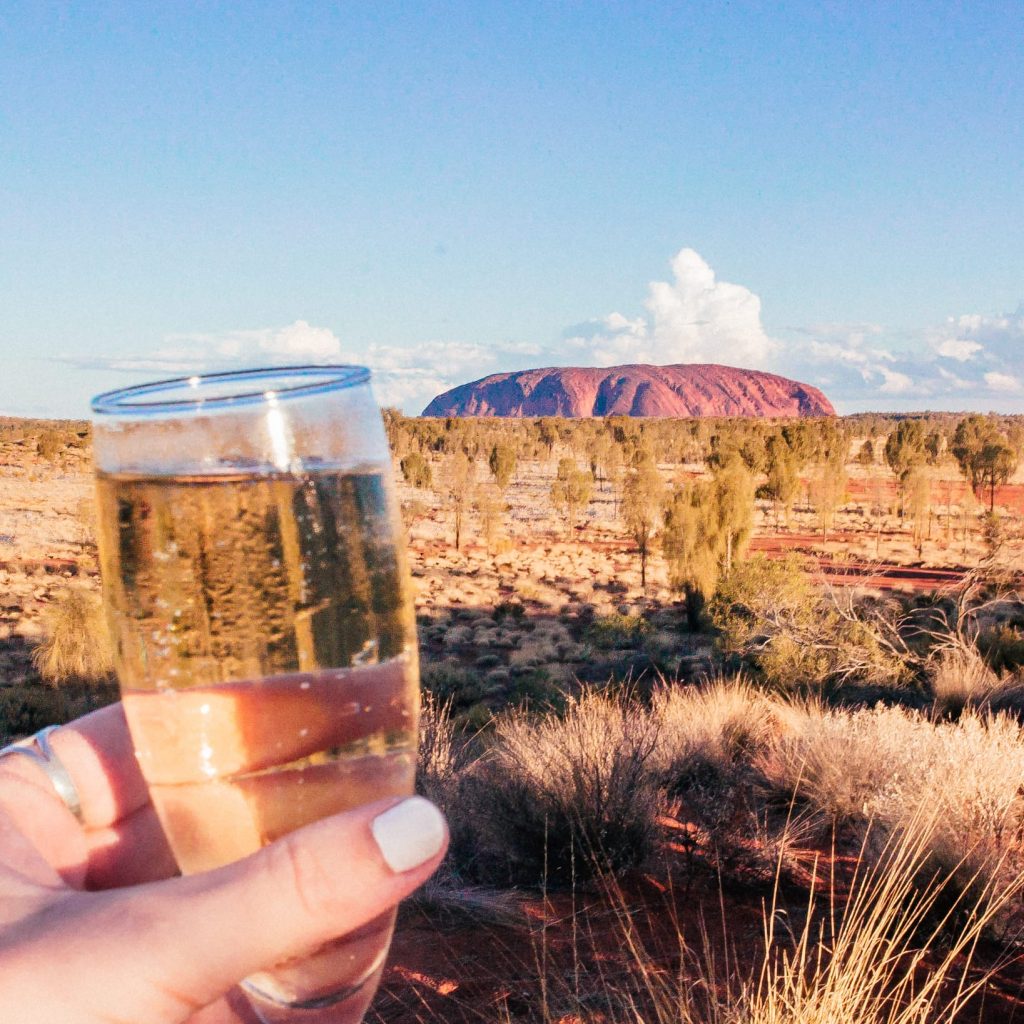
My journey to the red centre, to Uluru and surrounds, was more than I expected. I came back home feeling refreshed spiritually, physically and mentally. I couldn't say this enough - please do yourself a favour and visit and experience this unique, beautiful landscape. There is really nothing like it in the world. You will not regret a single second.
Have you ever been to the Australian Outback? What did you think? Where do you recommend I should go next?